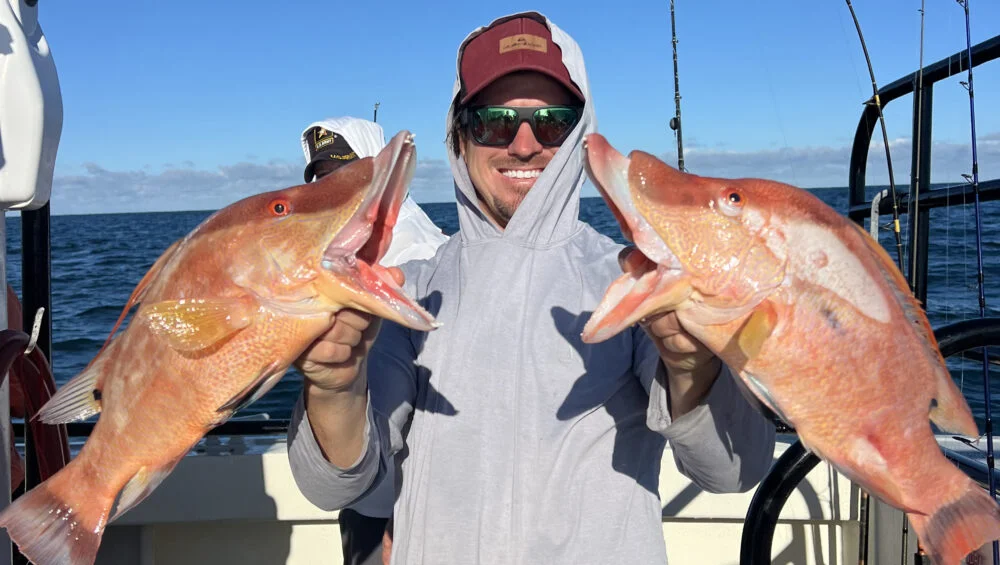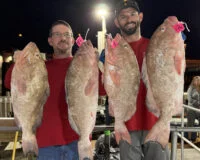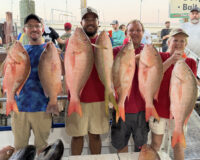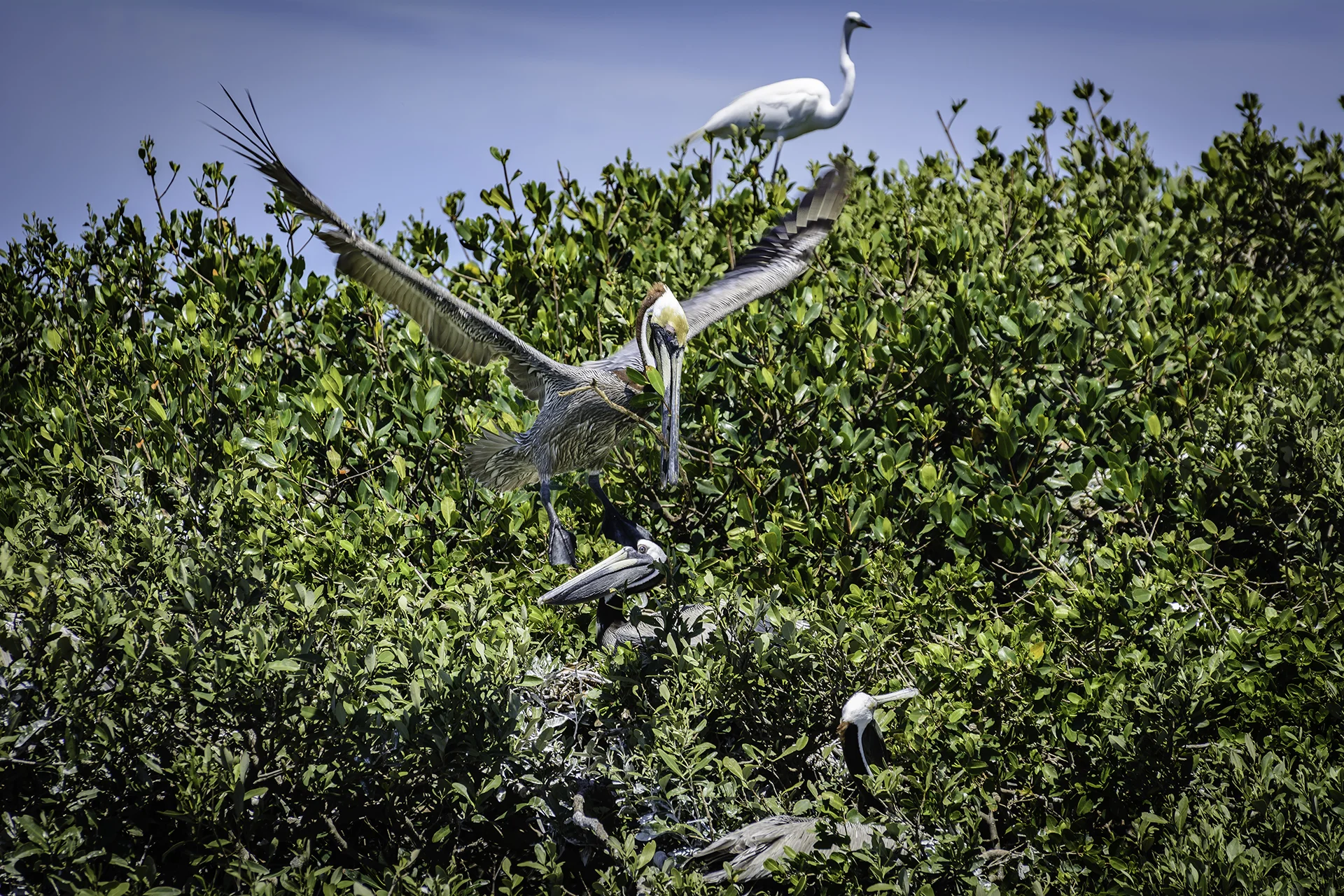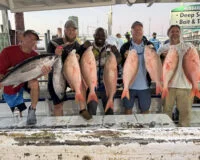Inshore Fishing Report
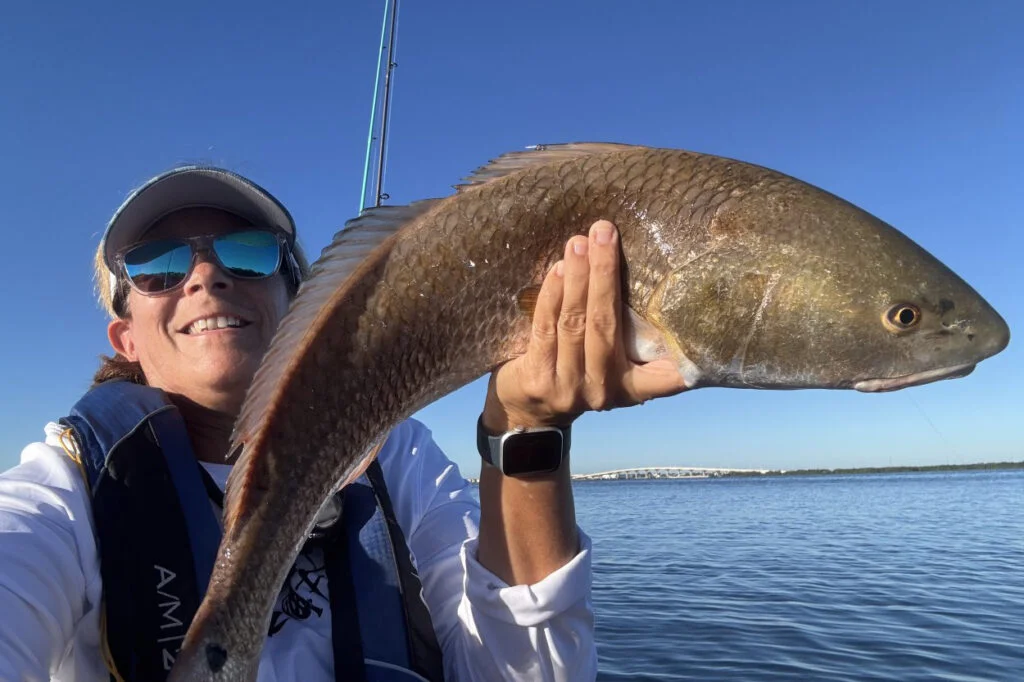
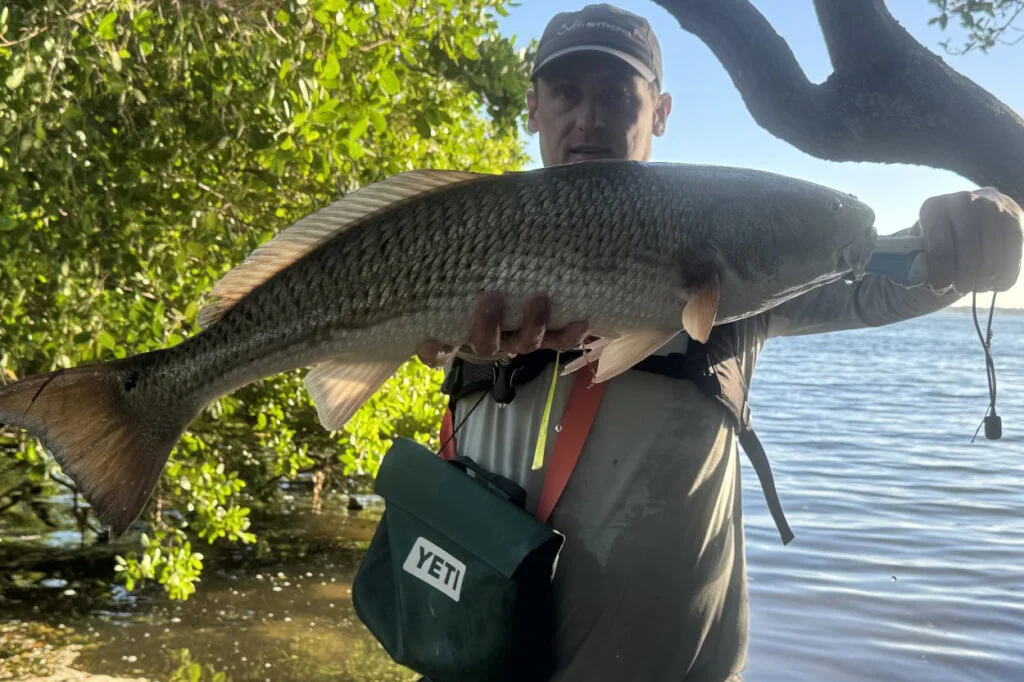
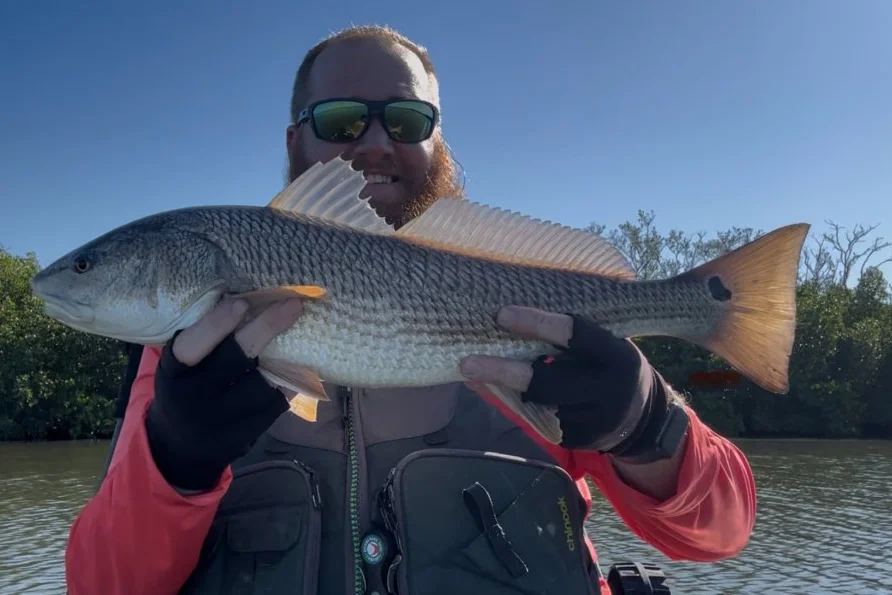
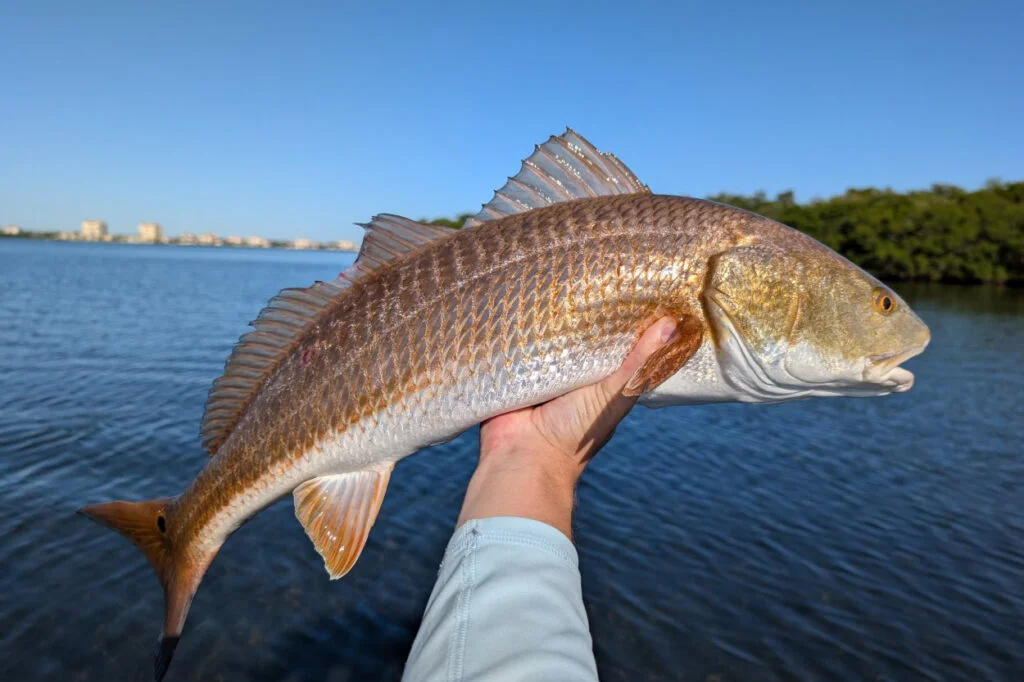
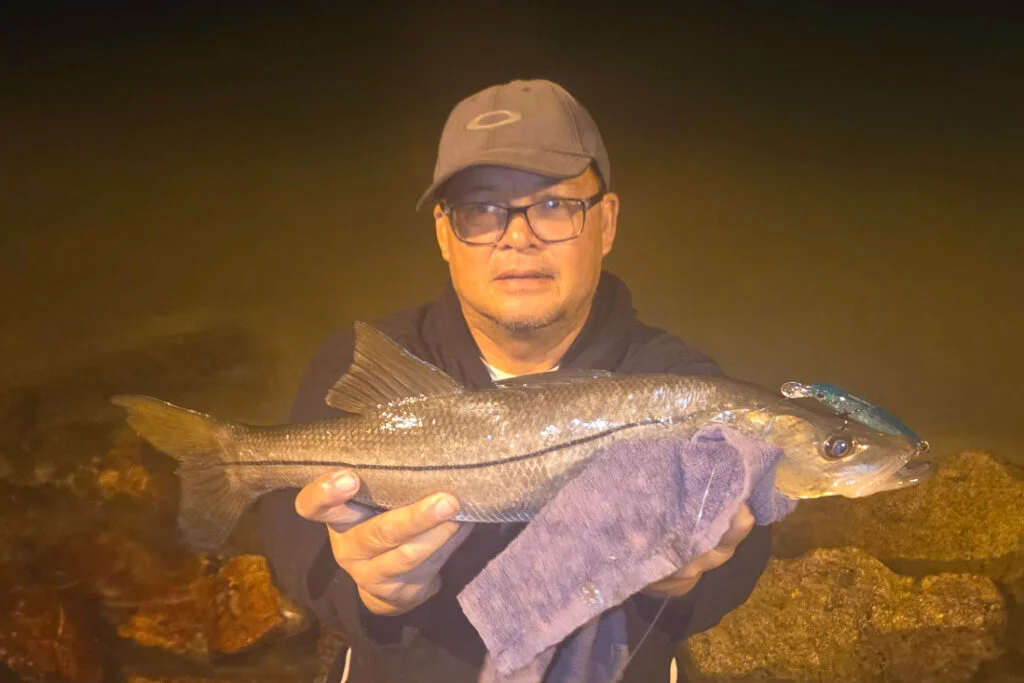
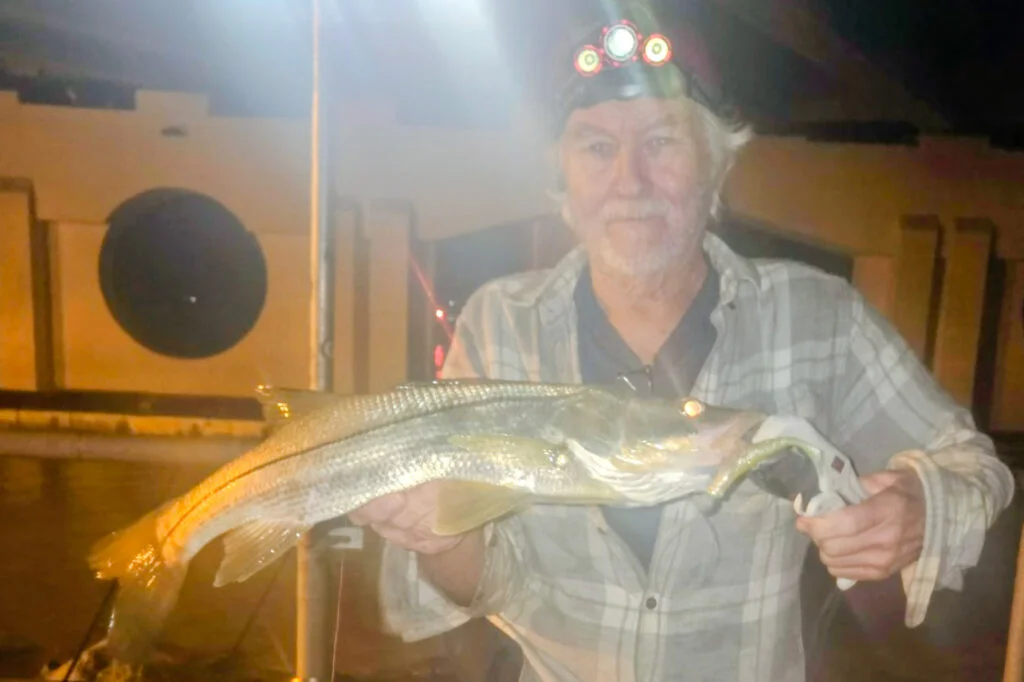
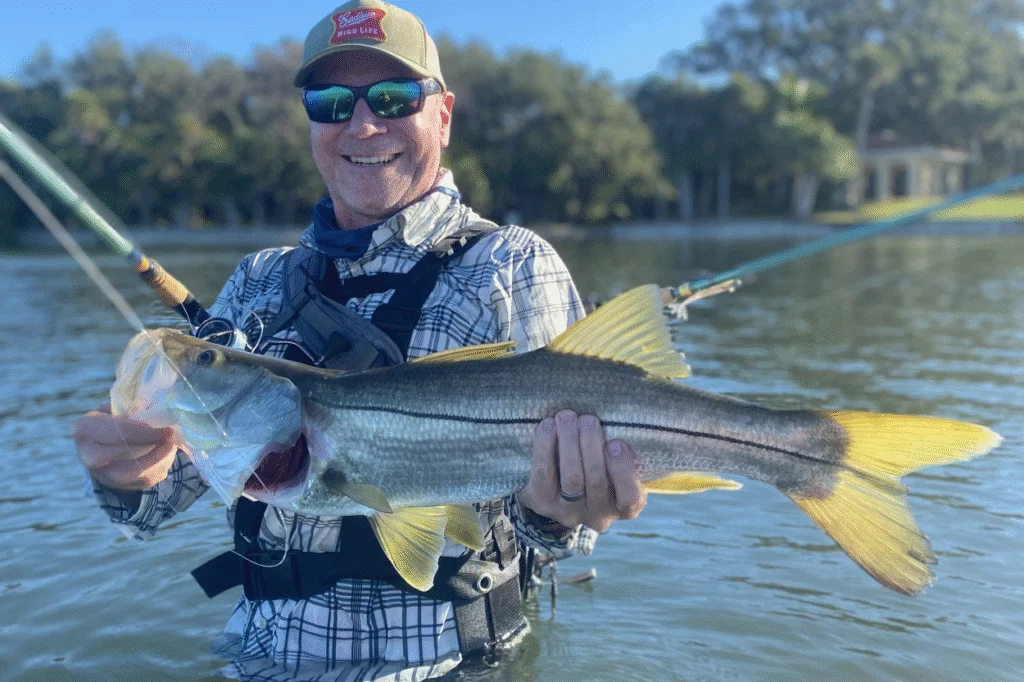
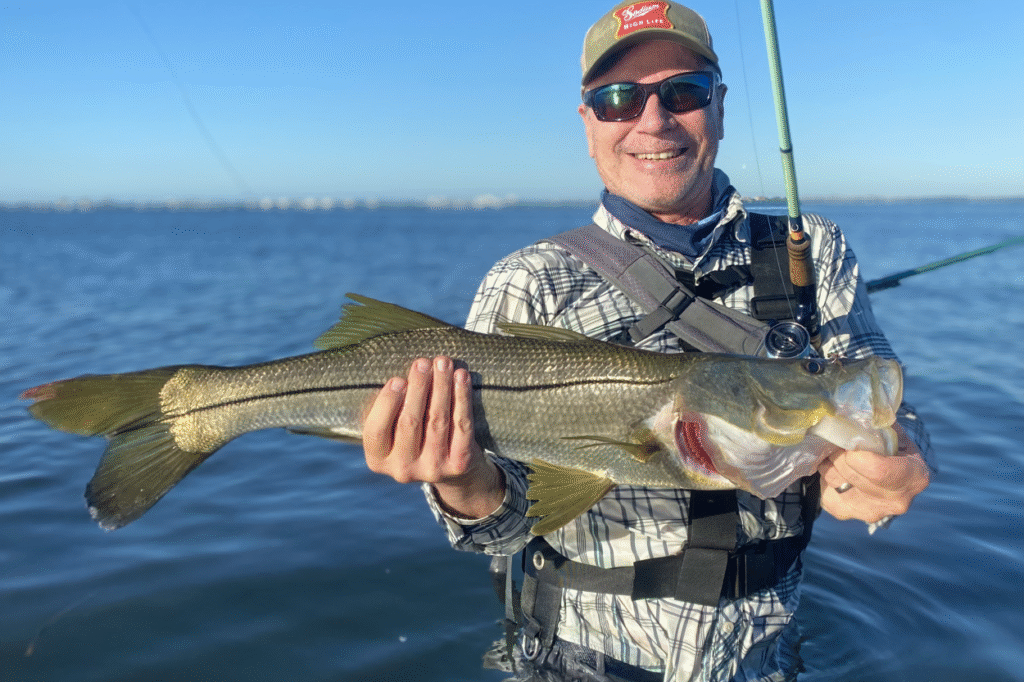
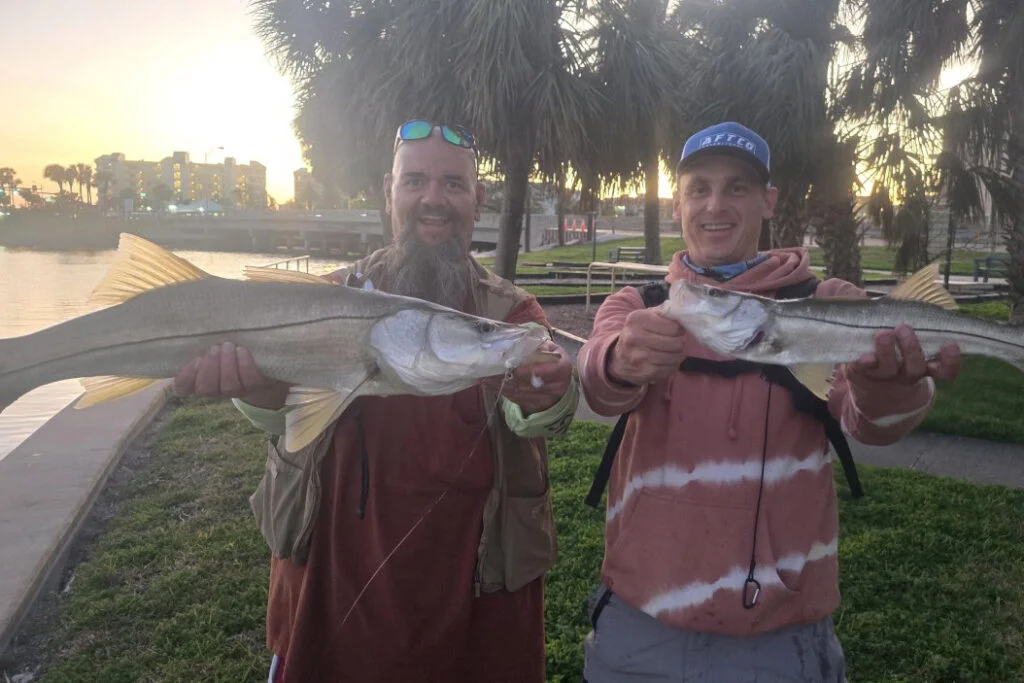
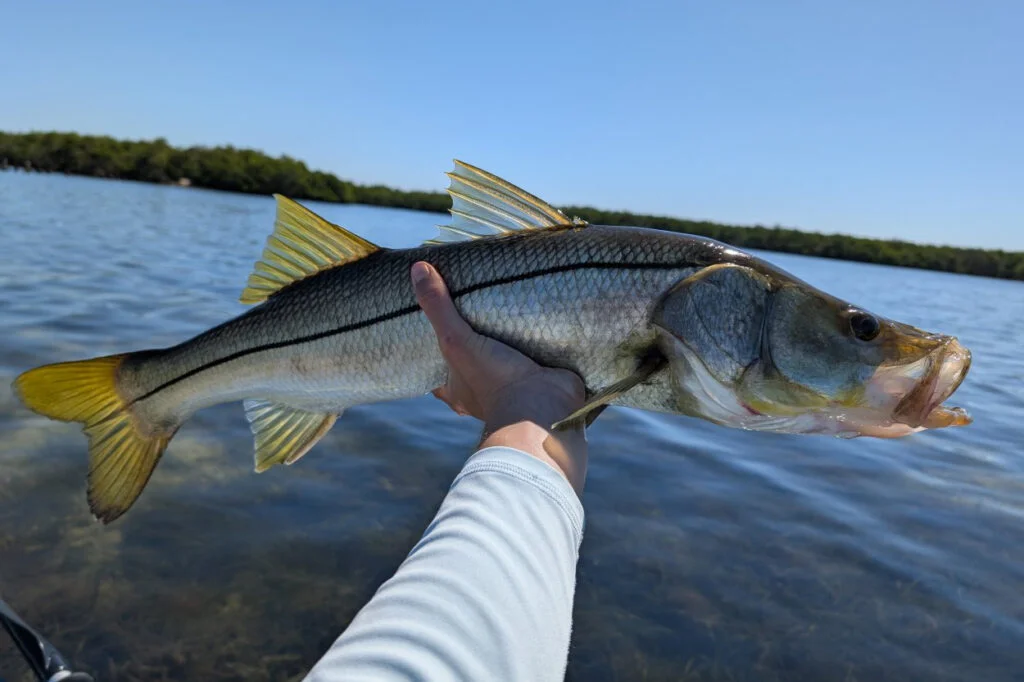
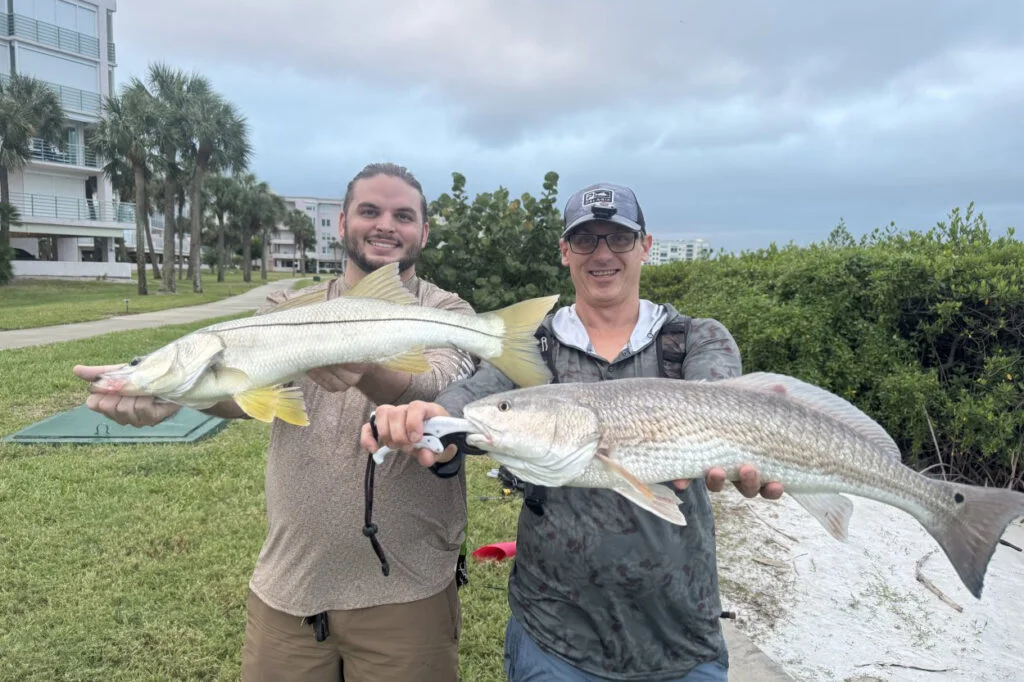
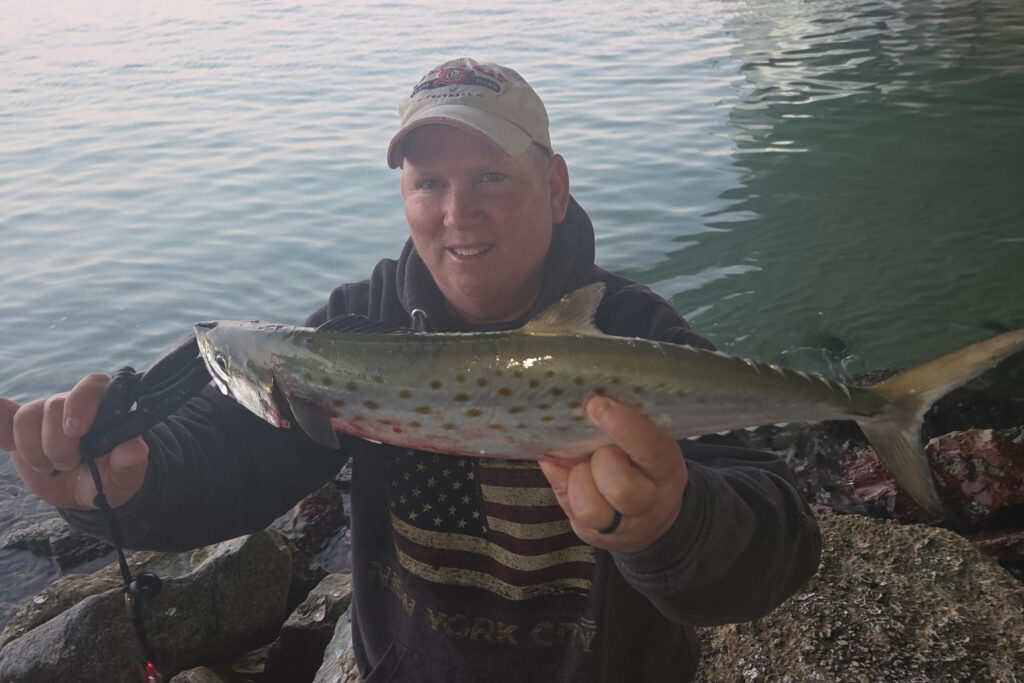
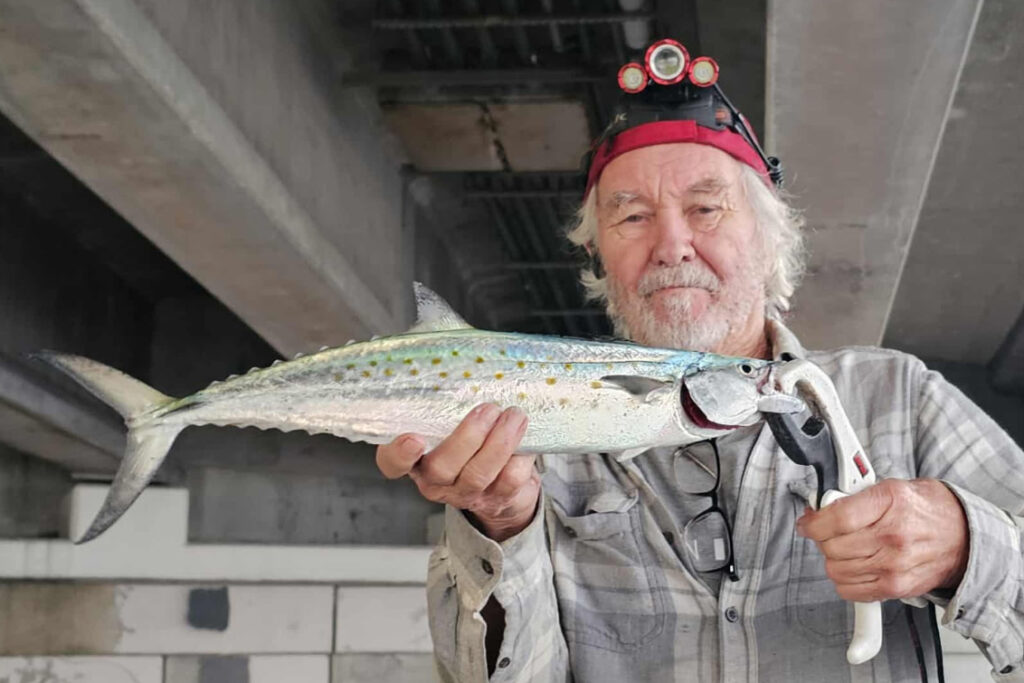
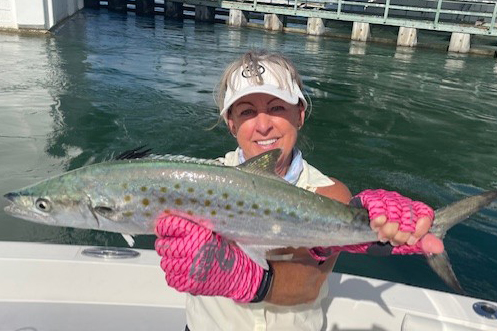
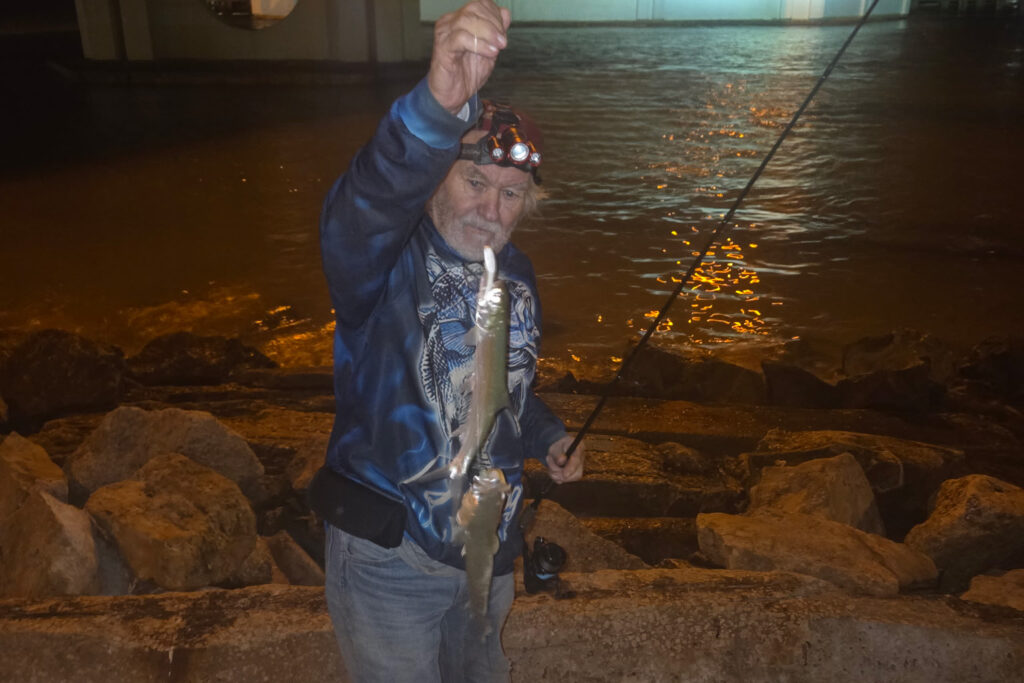
The inshore bite around Hubbard’s Marina is red hot right now with incredible action across the board. Spanish mackerel are absolutely thick throughout the outer bay and along the beaches, crashing through massive schools of bait that seem to be everywhere this week. Fast-moving, flashy lures or white bait with light fluorocarbon leaders are both producing plenty of hookups. Redfish action has been excellent too, with concentrated schools feeding aggressively along the mangrove shorelines, oyster bars, and points—especially on moving water. Snook are actively transitioning from the beaches and passes back into the bays as the days shorten and the first hints of fall arrive. Look for them staging around bridges, docks, and deeper cuts. Trout have started shifting shallower as water temps begin to cool, feeding heavily across grass flats and sandy potholes. Flounder have been particularly aggressive lately, ambushing baits along sandy edges and drop-offs, adding yet another reason to get out and enjoy the incredible inshore fishing this week in central west Florida.
Fishing Tips
- Snook: Use live baits like greenbacks, threadfins, and shrimp, or try flair hawks and soft plastics at night.
- Redfish: Look for them around mangroves, oyster bars, and flats, and use dead baits during higher tides.
- Trout: Target them with soft plastics, white bait, and shrimp around deeper flats and potholes.
- Tarpon: Target them during the full moon with crab flushes, making it an ideal time to target them.
- Flounder: Find them near sandy bottoms and structures, biting on bottom baits.
- Pompano: Be prepared to move frequently to stay on their bite.
- Sharks: Use big dead baits in areas with moving water.
Help spread the word about what to do if you hook or entangle a bird. Never cut the line; instead, reel in the bird carefully to dehook and release it. If you accidentally hook a dock, break the line at the hook to avoid leaving any line in the water. Seabirds with fishing lines hanging from them are becoming more common, and this could lead to the closure of fishing areas.
Rising concerns about bird entanglements might result in closing fishing spots, impacting the few available locations around Tampa Bay from shorelines, docks, bridges, or piers. Learn more in our recent podcast with Salt Strong: https://www.saltstrong.com/articles/shutting-down-fishing-at-busy-pier/.
NEarshore Fishing Report
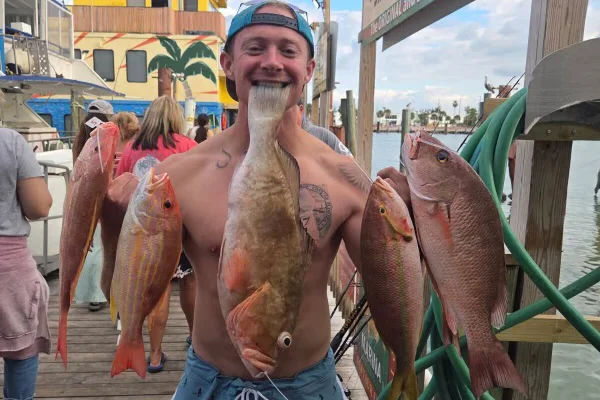
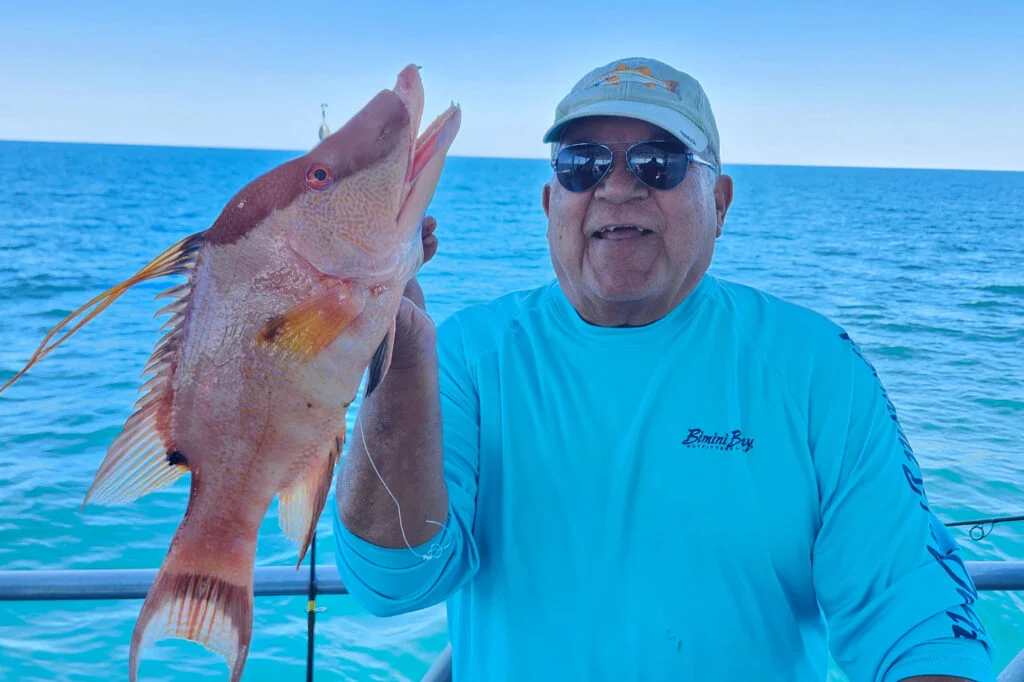
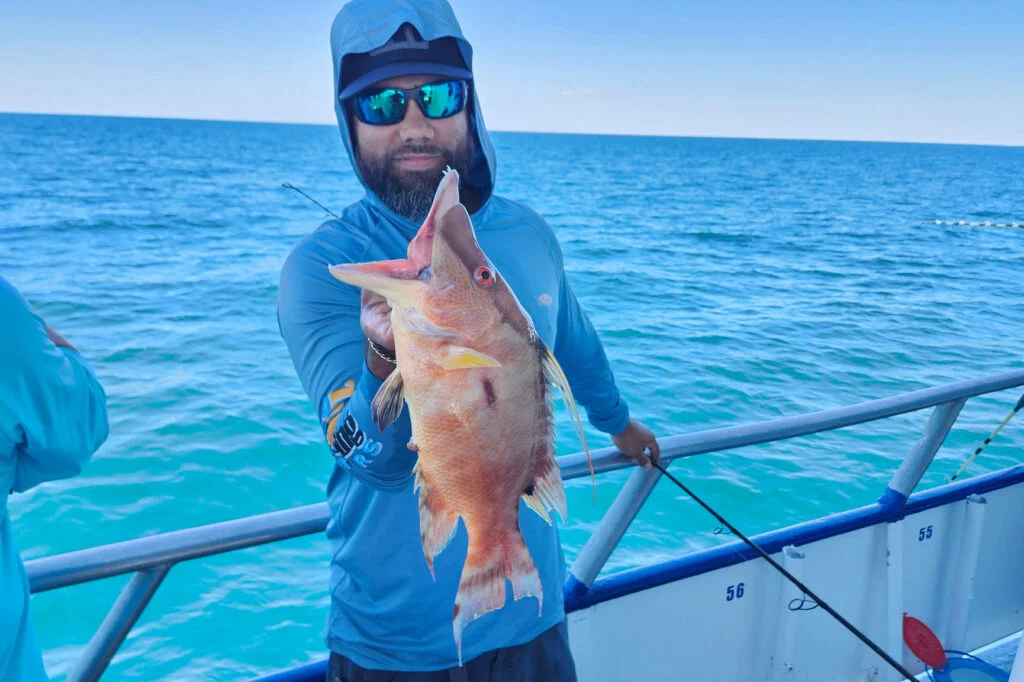
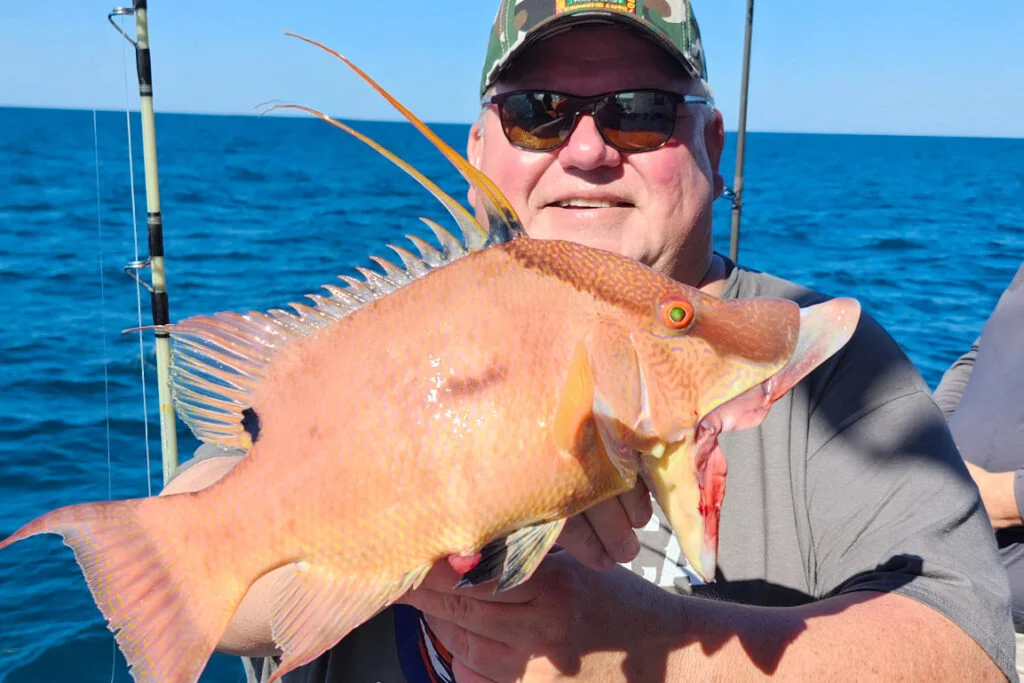
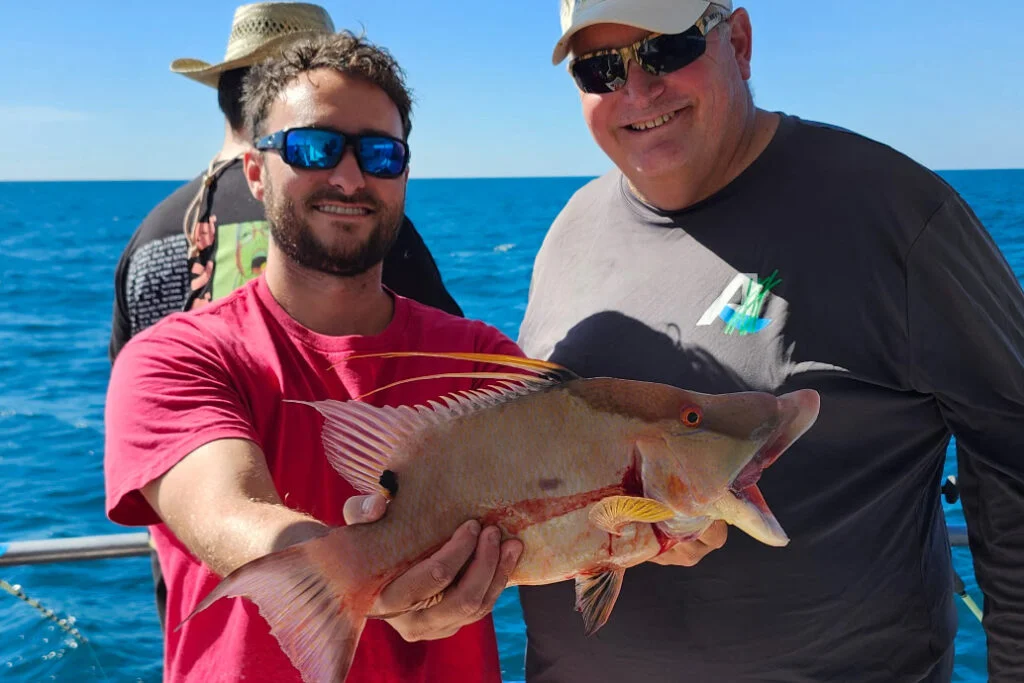
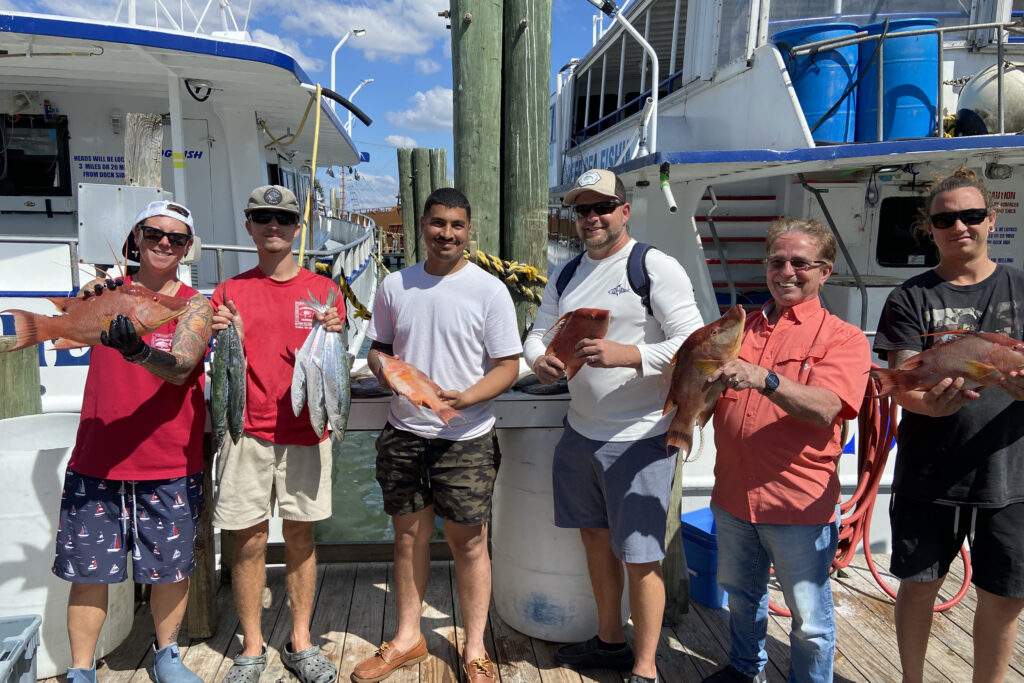
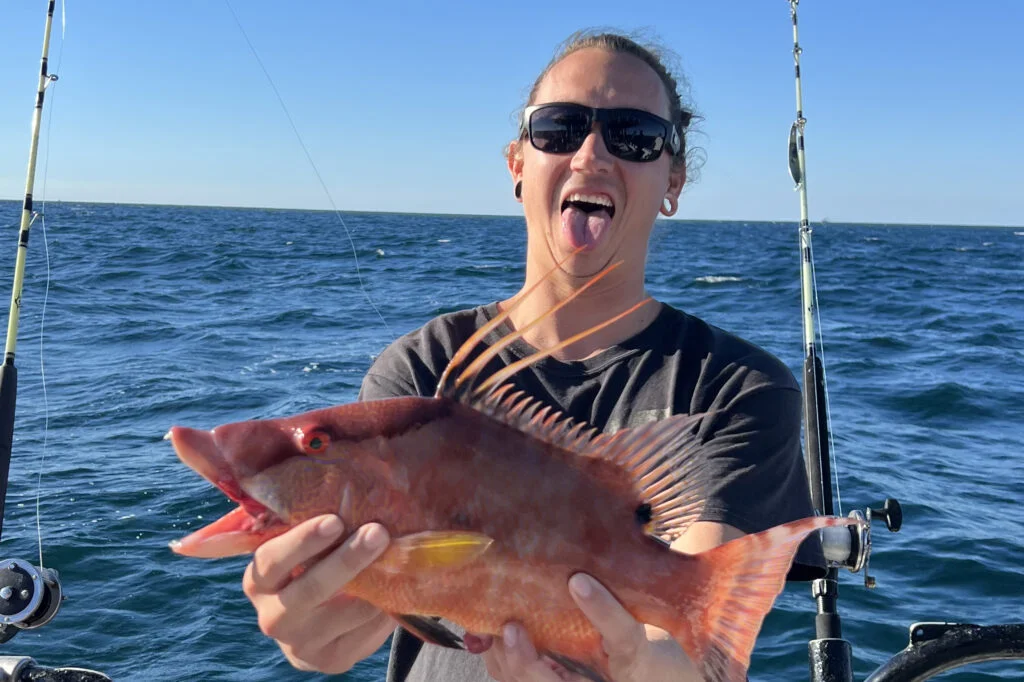
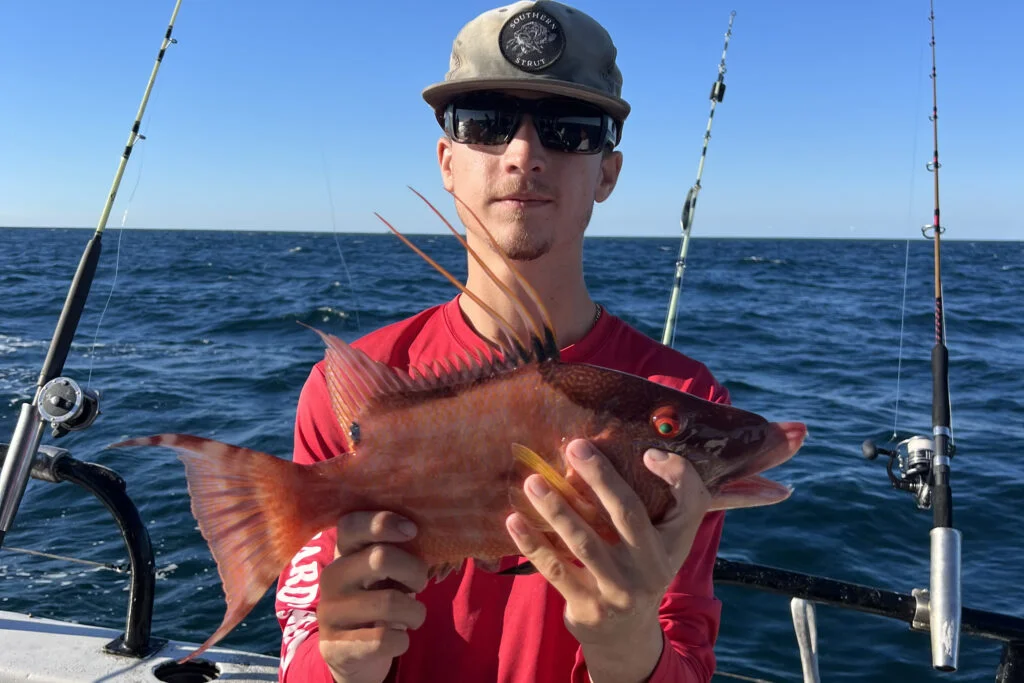
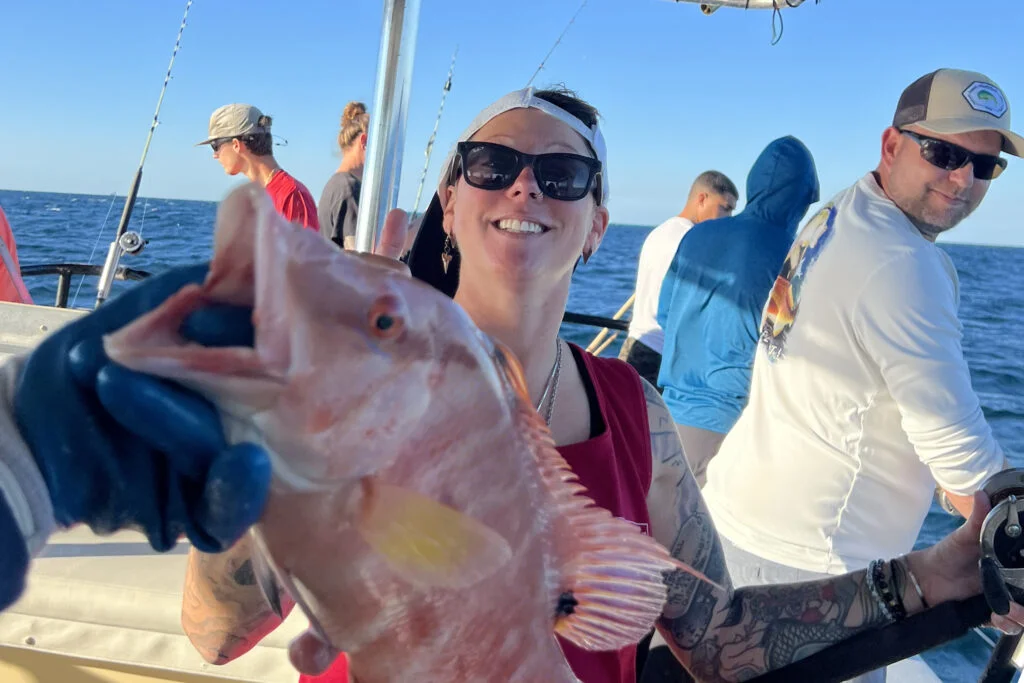
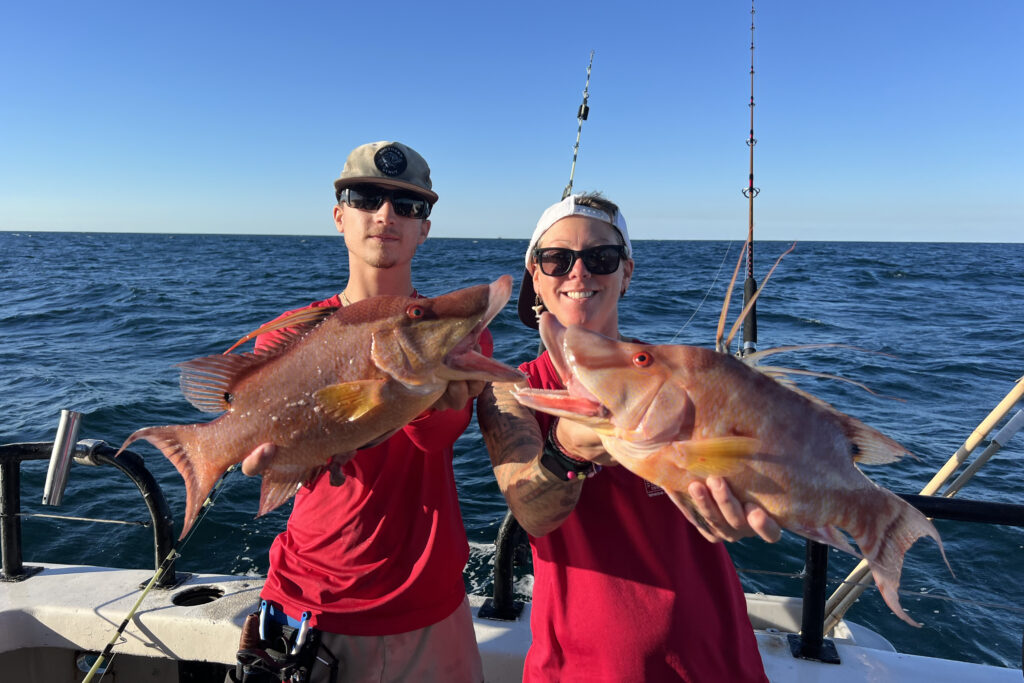
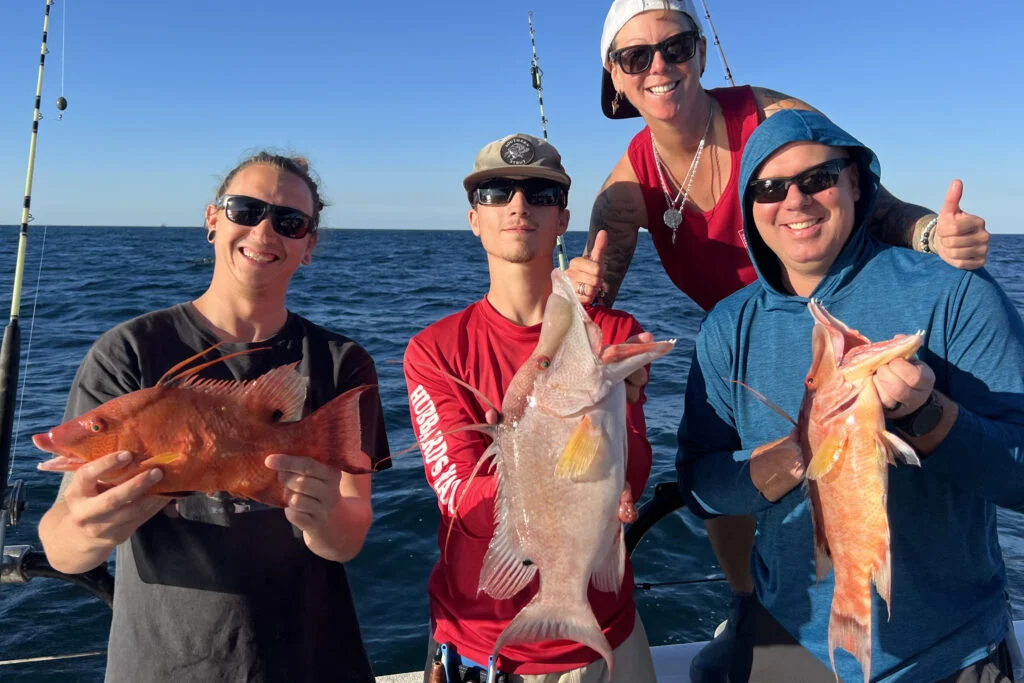
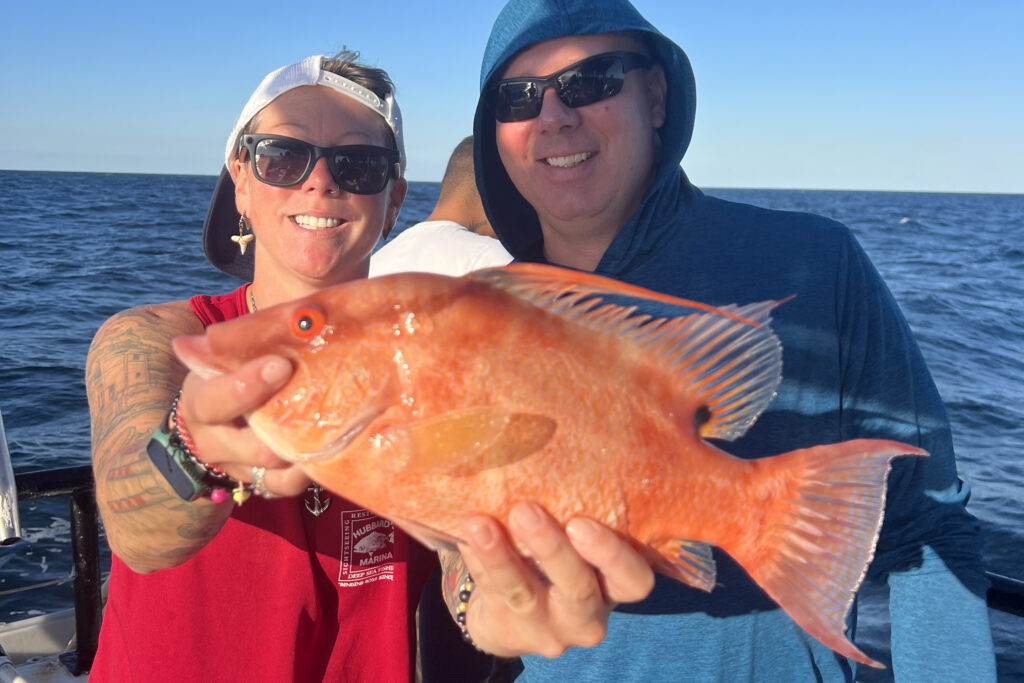
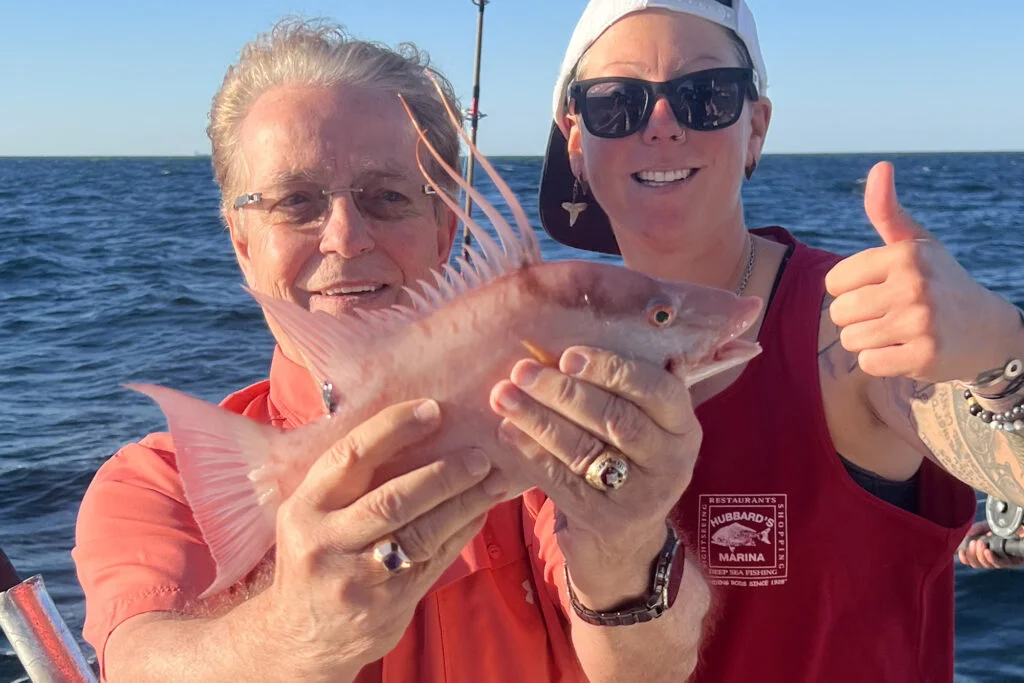
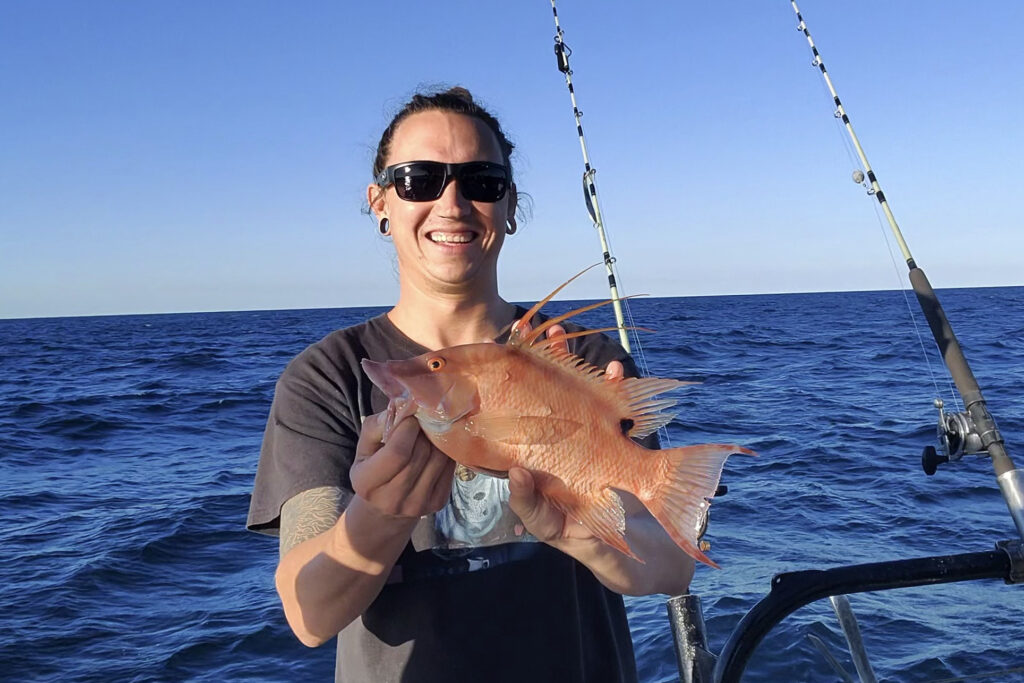
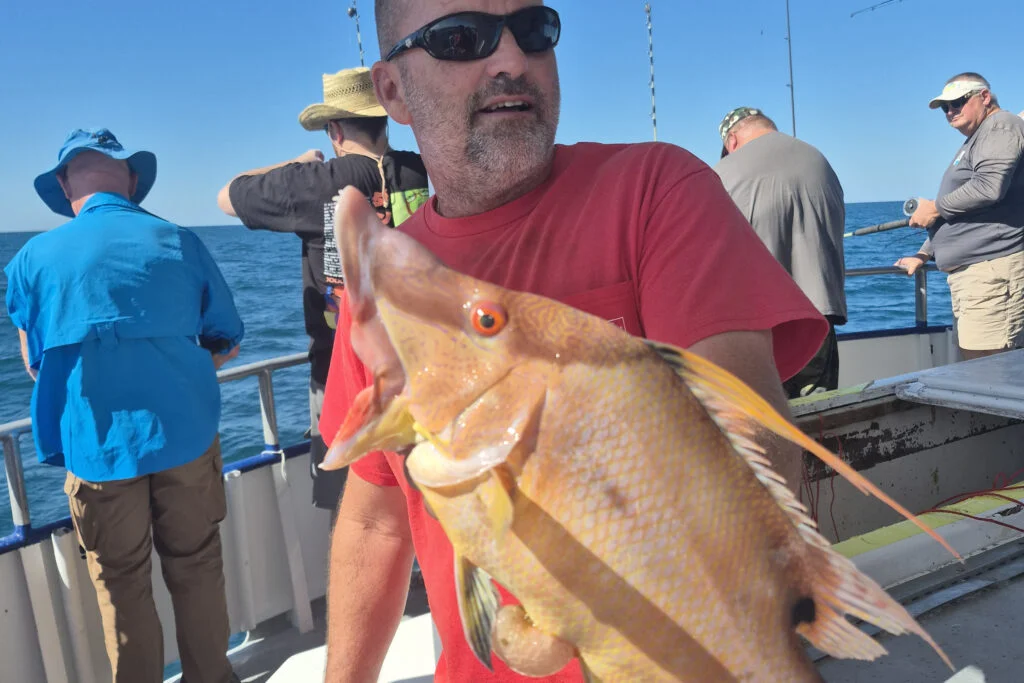
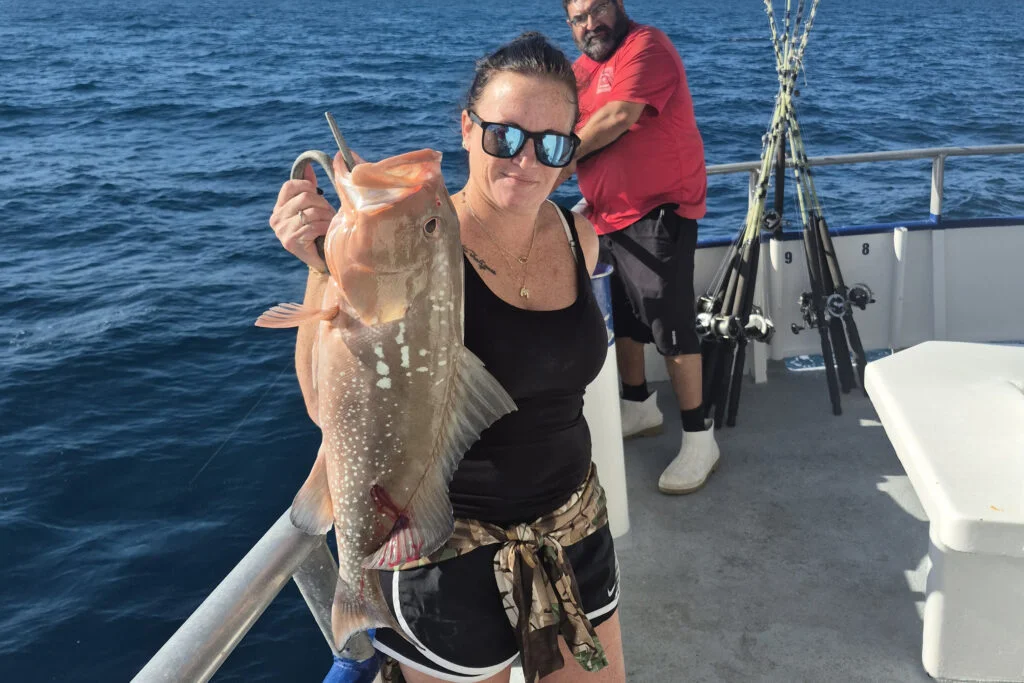
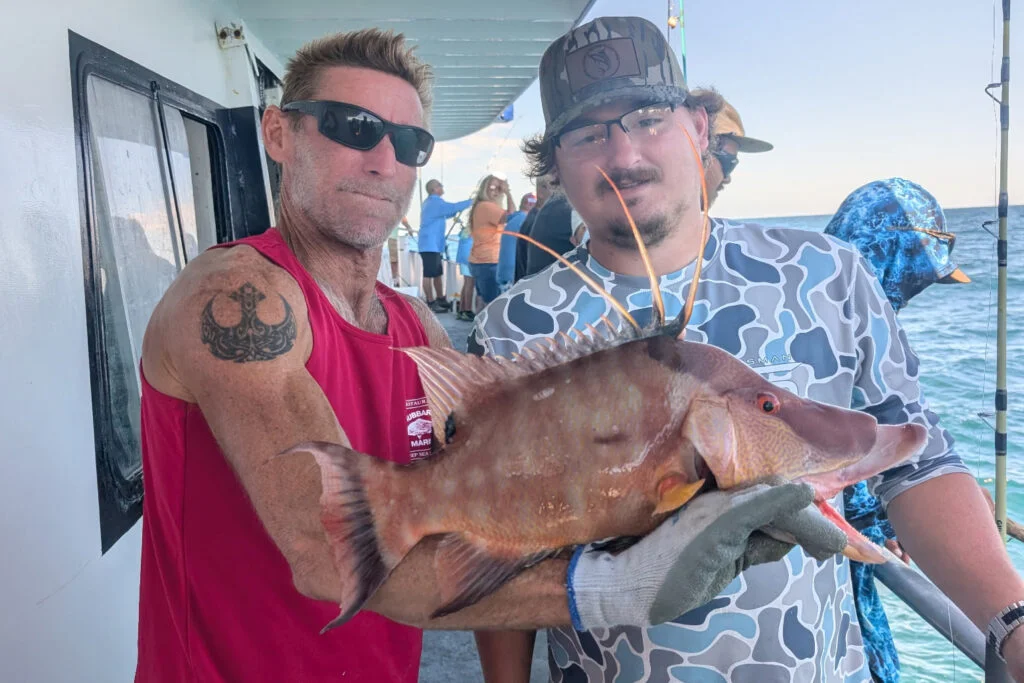
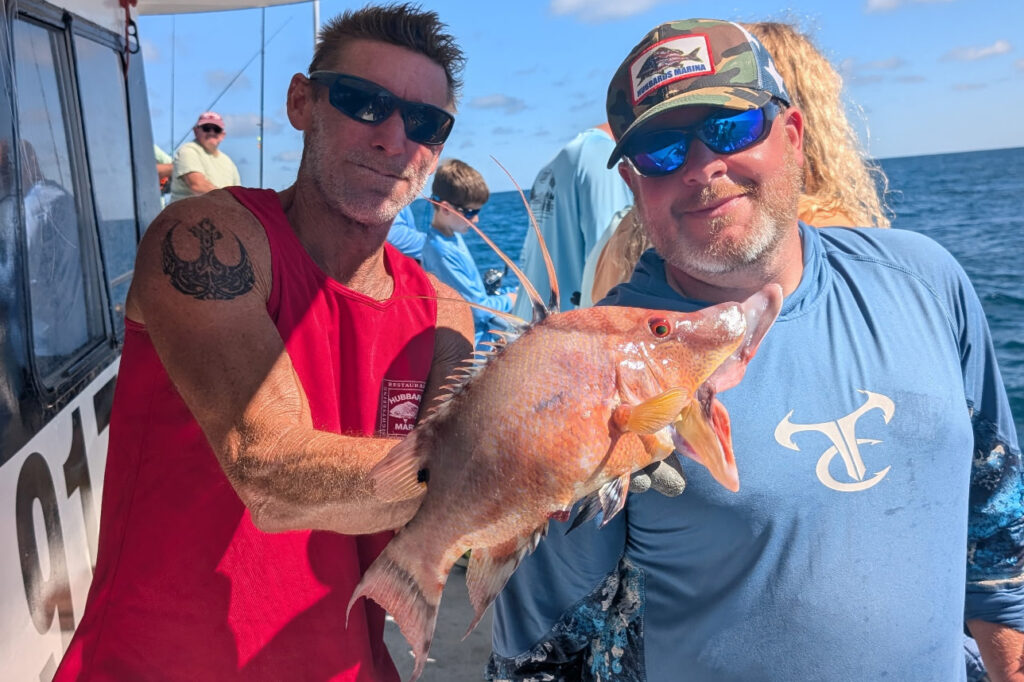
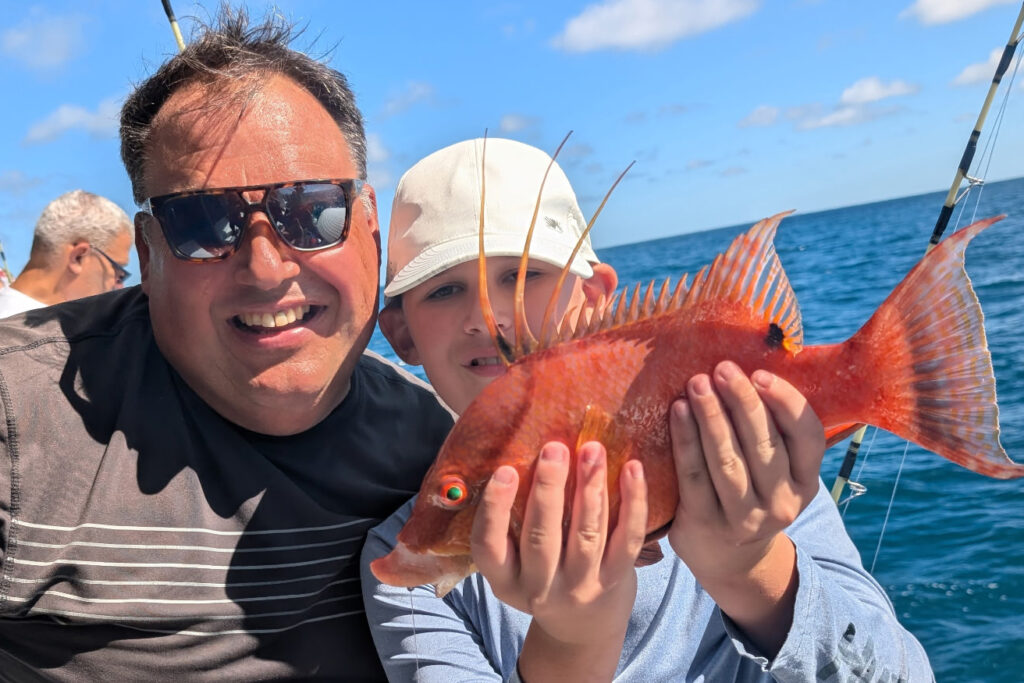
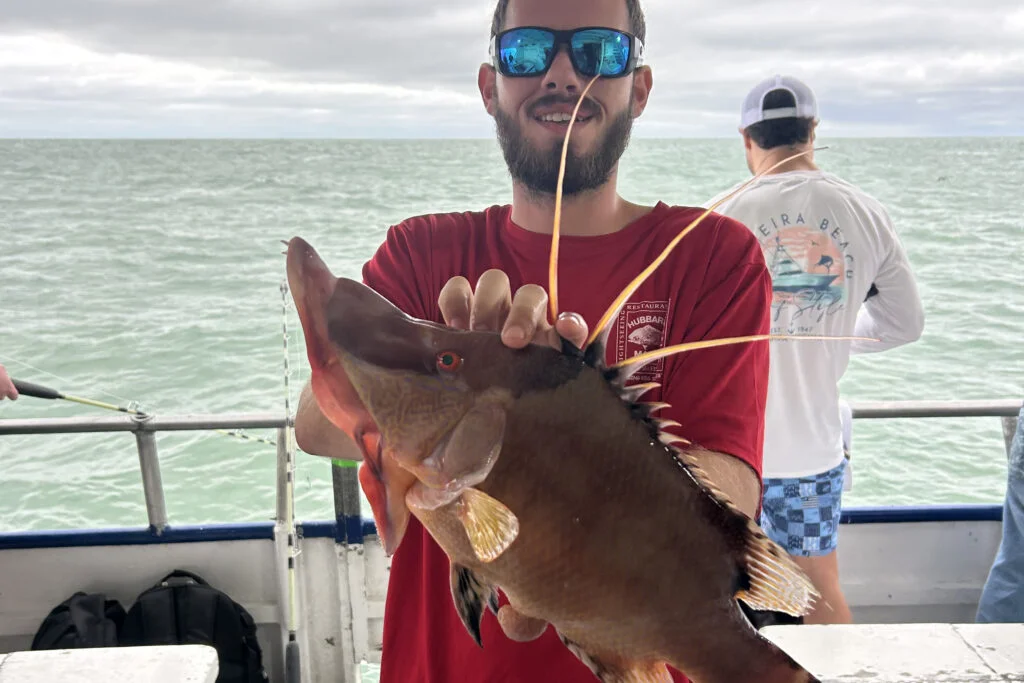
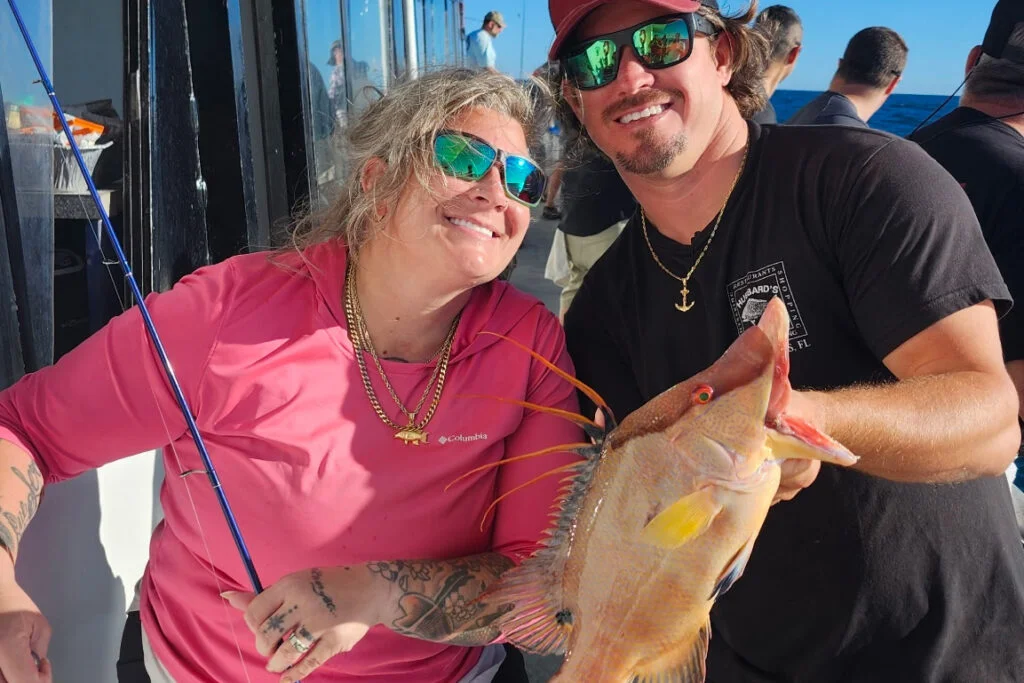
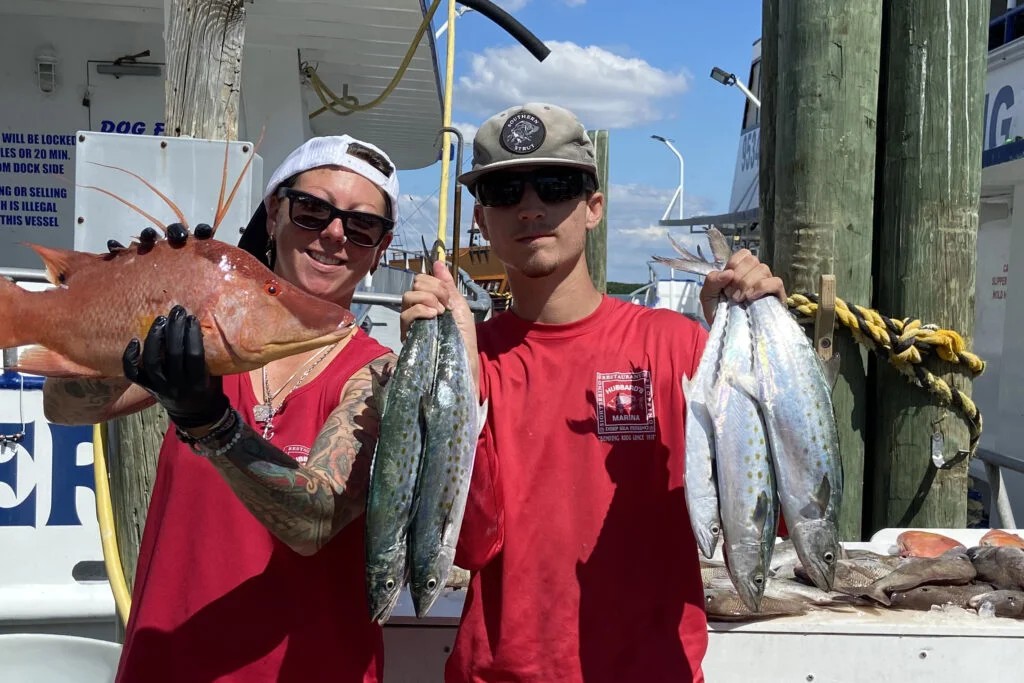
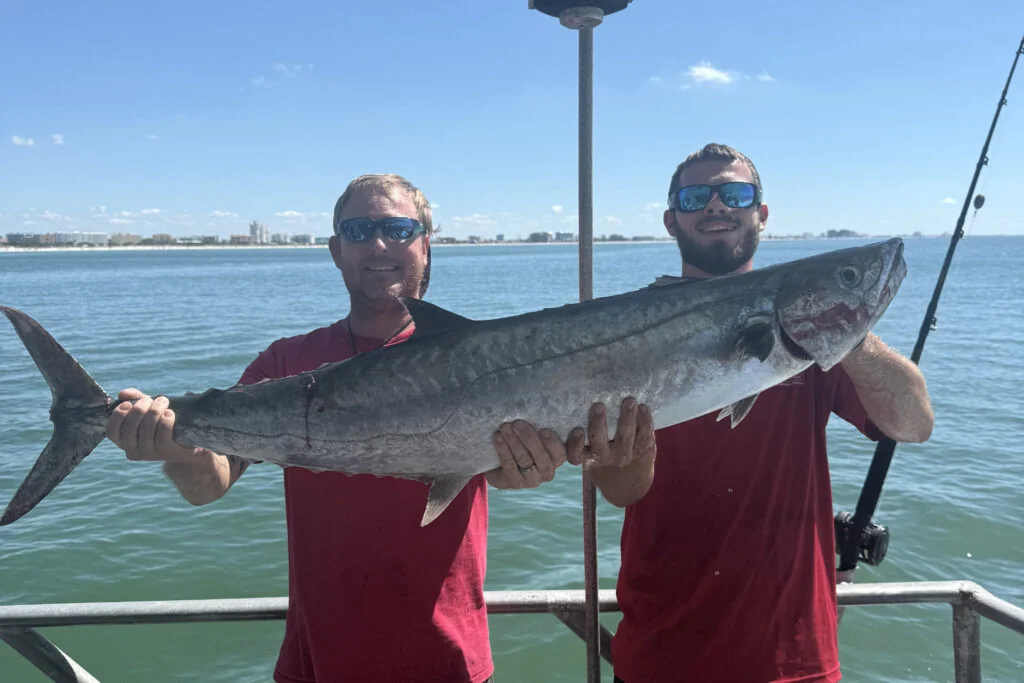
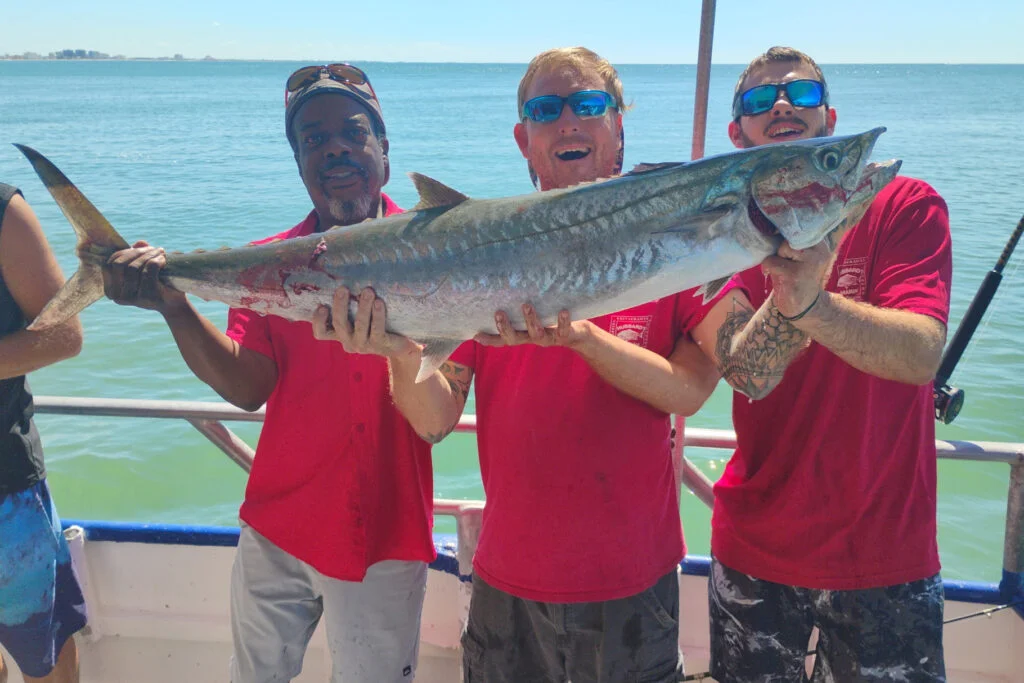
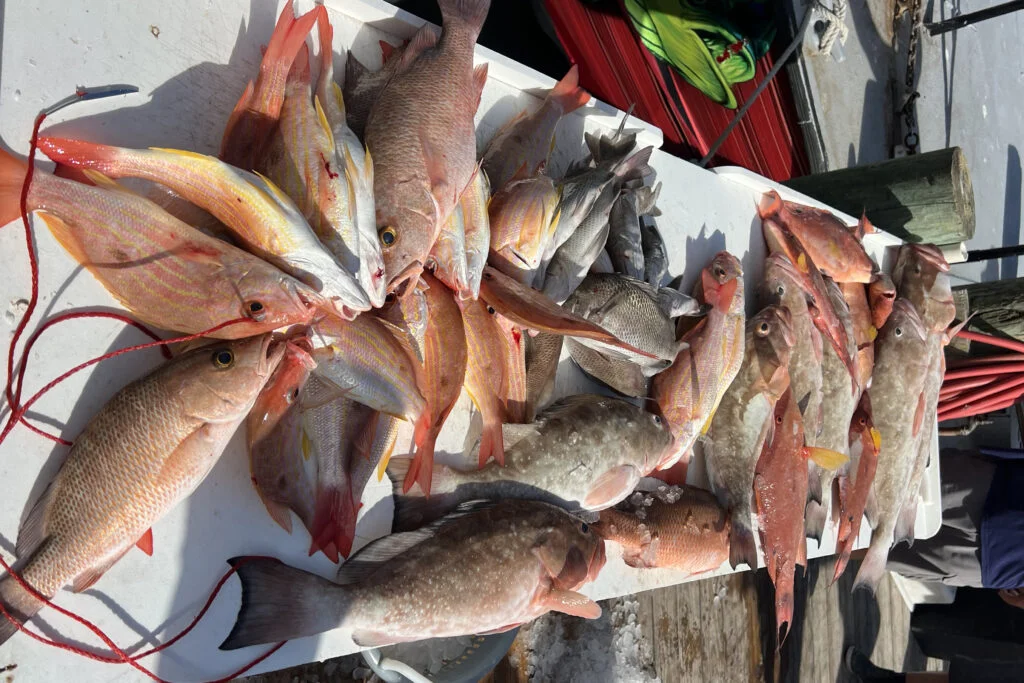
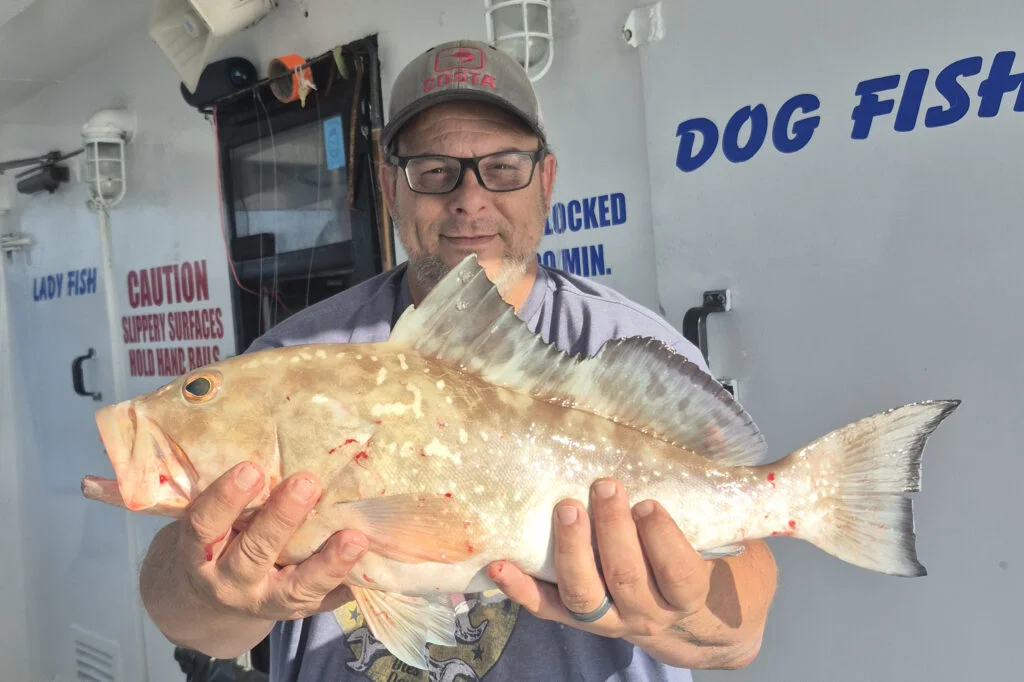
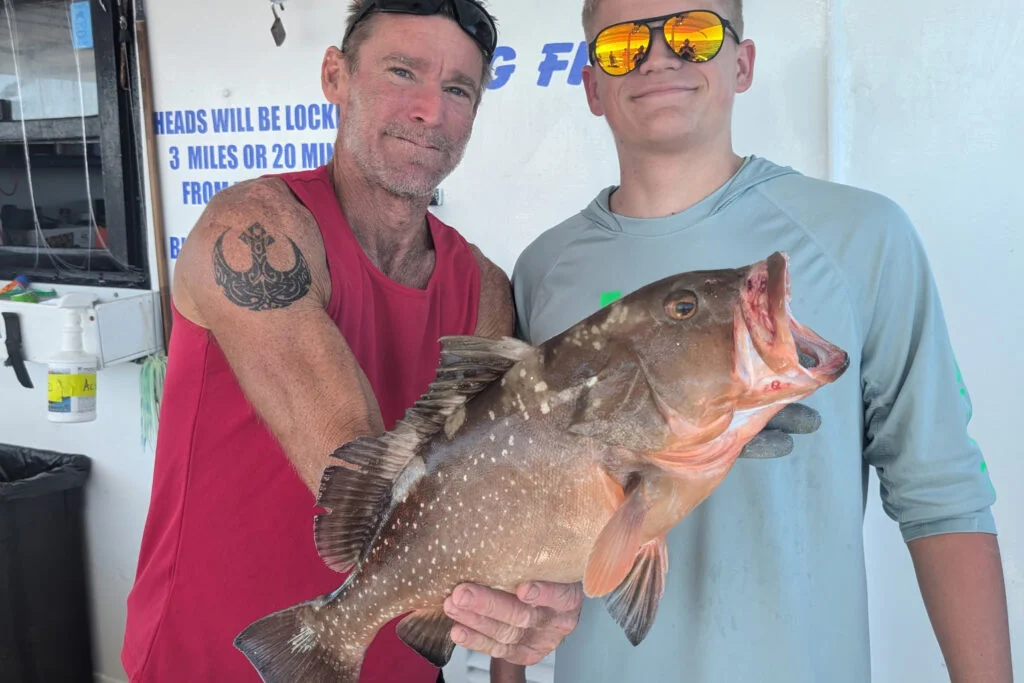
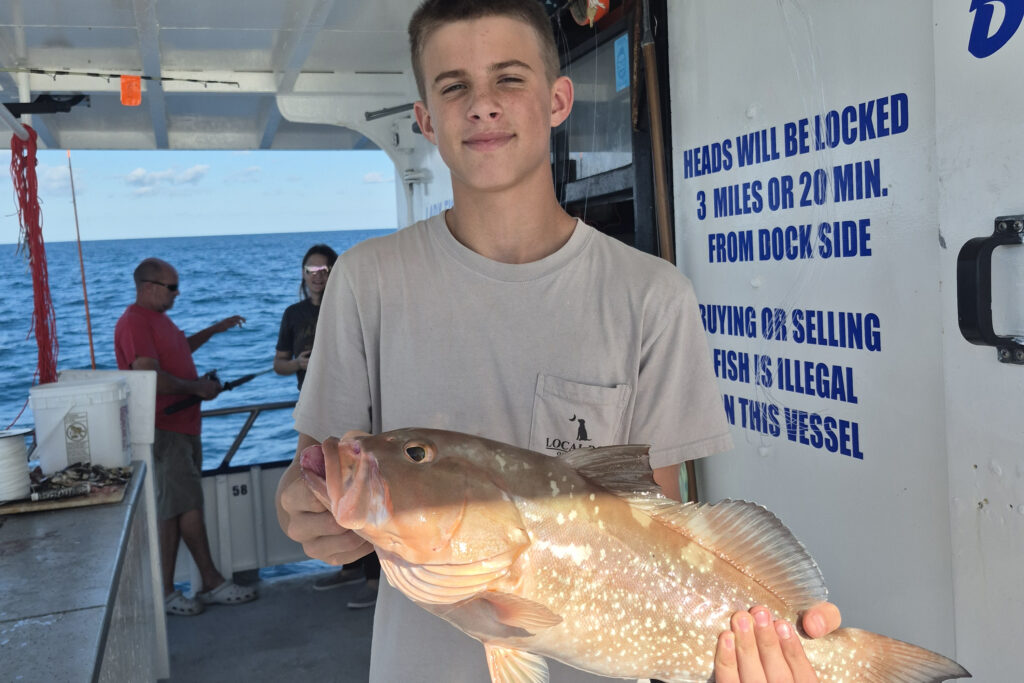
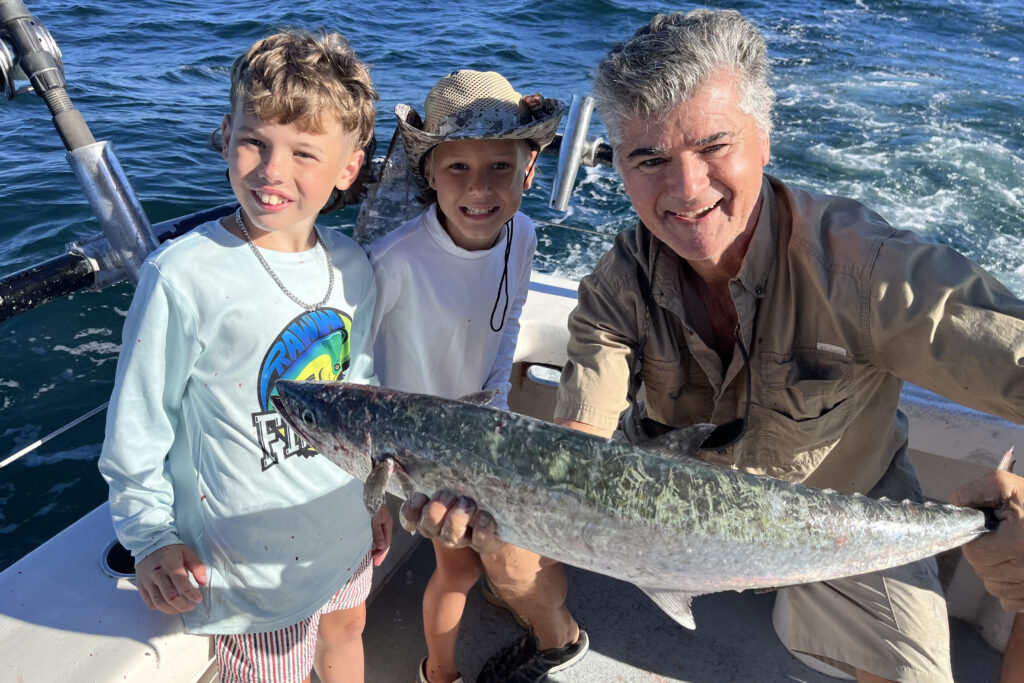
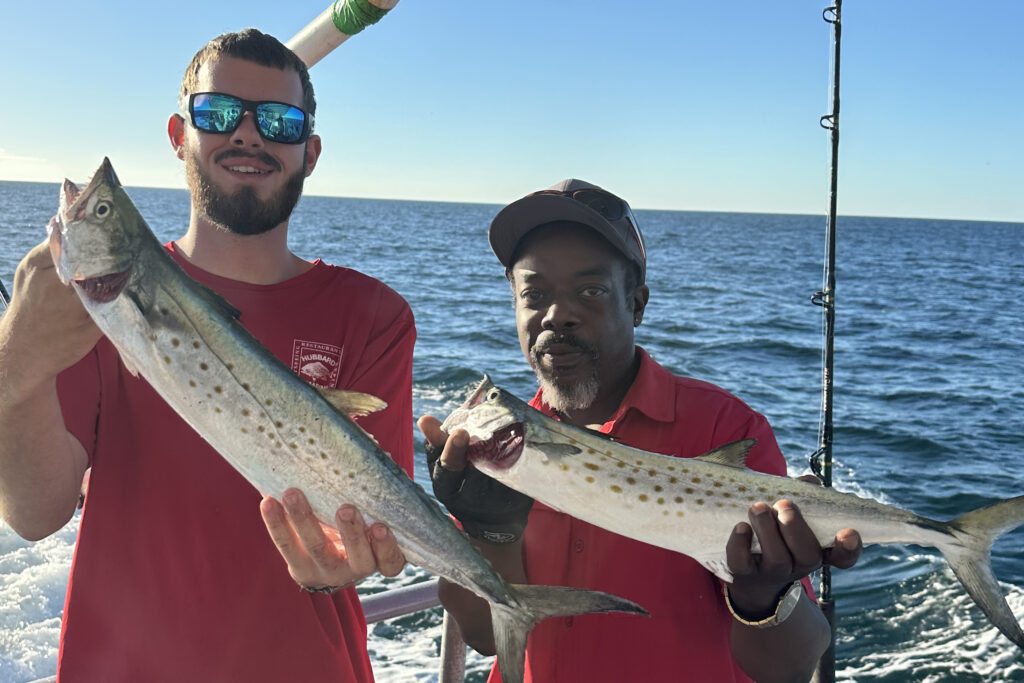
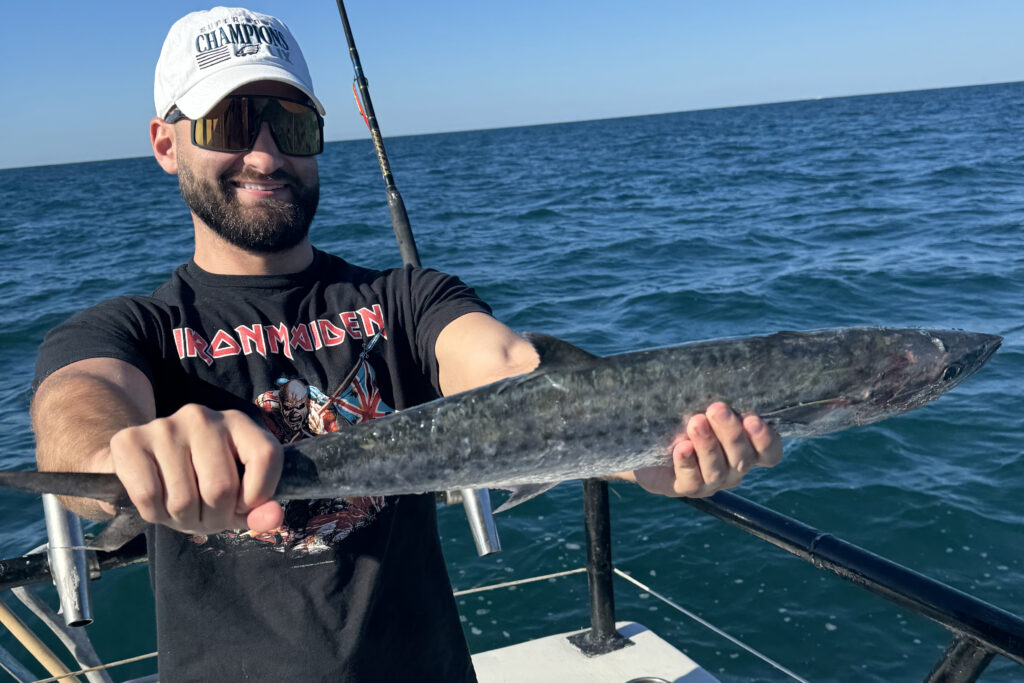
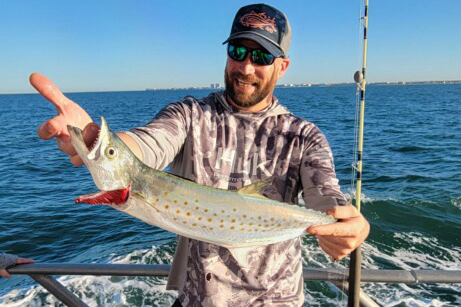
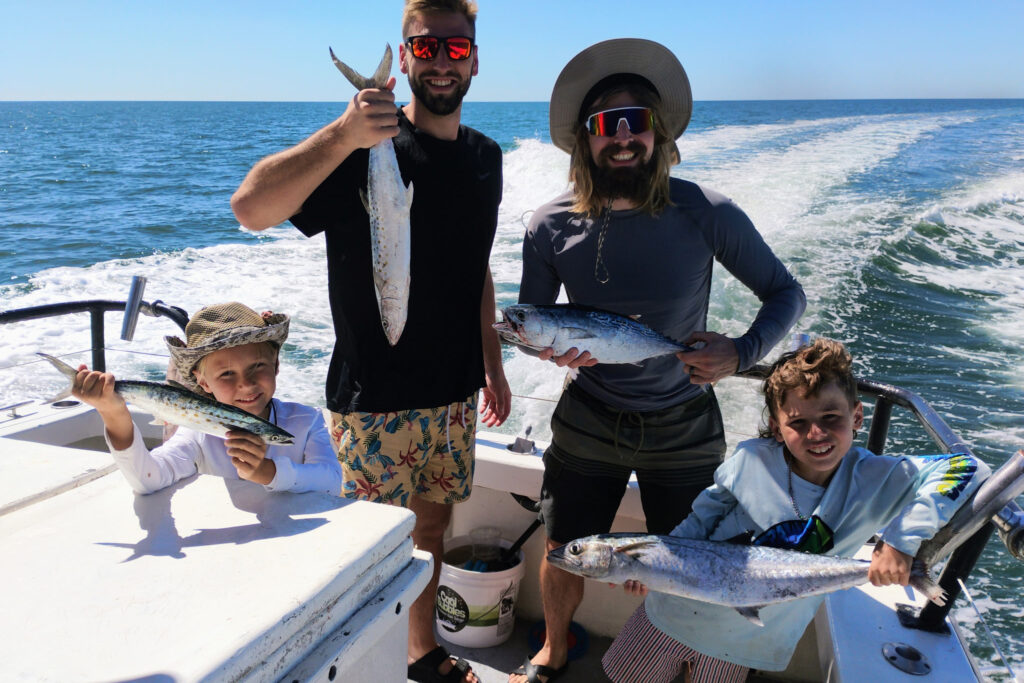
The near shore bite off Madeira Beach has been really heating up, offering a great mix of action for anglers targeting everything from hogfish to kingfish. The cooler weather patterns and those first fronts of the season have really kicked our near shore fishery into gear. Hogfish are turning on strong, responding well to live shrimp on light tackle—especially when fished on that long 10–15ft section of fluorocarbon leader above a knocker rig. These fish tend to be less aggressive feeders, so downsizing tackle and staying patient around the smaller ledges, hard bottom, or shell patches in 40–70ft of water pays off big.
Lane snapper have been steady, and as we move deeper—out to that 60–90ft range—they’ve really started to fire up. They’re biting just about anything when they’re feeding, but live shrimp and small chunks of cut threadfin seem to consistently bring in the best catches. Mangrove snapper action continues to be hit and miss near shore, but when you find them stacked up, they’re quality fish. Using a smaller double-snell rig with 3/0 hooks and a small piece of threadfin on 30lb leader can make all the difference when the bite slows.
Red grouper are still mixed in near shore, though keeper-sized fish are more common the deeper you go. Most of what we’re seeing inside 100ft are the “teenagers,” but every trip or two brings a solid one to the box for those putting in the time.
And if you’re looking for some fast-paced fun, the mackerel bite near shore has been absolutely on fire. Bait is thick across the near shore waters, and big schools of Spanish mackerel are tearing through them with plenty of kingfish mixed in. The kings showed up this past week, adding an exciting shot at a hard-pulling pelagic right off the beaches.
Overall, the near shore action is diverse and lively—perfect for anyone looking to get out and enjoy the early fall transition when the Gulf waters start to come alive again.
Fishing Tips
- Red Grouper: Target the deepest near shore waters with big dead baits or solid live baits. Use 60 lb test and 7/0 hooks for best results.
- Red Snapper: Use big dead baits like whole squid and bonita strips with heavy tackle to focus on larger fish. Prime trips include the 12-hour extreme, 39-hour, and 44-hour trips.
- Scamp Grouper: Use small to medium pinfish and cut threadfin, especially while targeting mangrove snapper.
- Mangrove Snapper: Near shore, use live shrimp and small chunks of threadfin on 30-40 lb test with 3-4/0 hooks. Offshore, use bigger chunks of cut threadfin or medium pinfish on 40-60 lb test with 5-7/0 hooks.
- Vermillion Snapper: Start around 100 feet of water using cut squid or threadfin. These fish are aggressive and not leader-shy.
- Yellowtail Snapper: Use shrimp, cut squid, and threadfin.
- Pelagic Species: Keep flat lines and pitch rods ready for sailfish, kingfish, wahoo, tuna, and mahi mahi.
Offshore Fishing Report
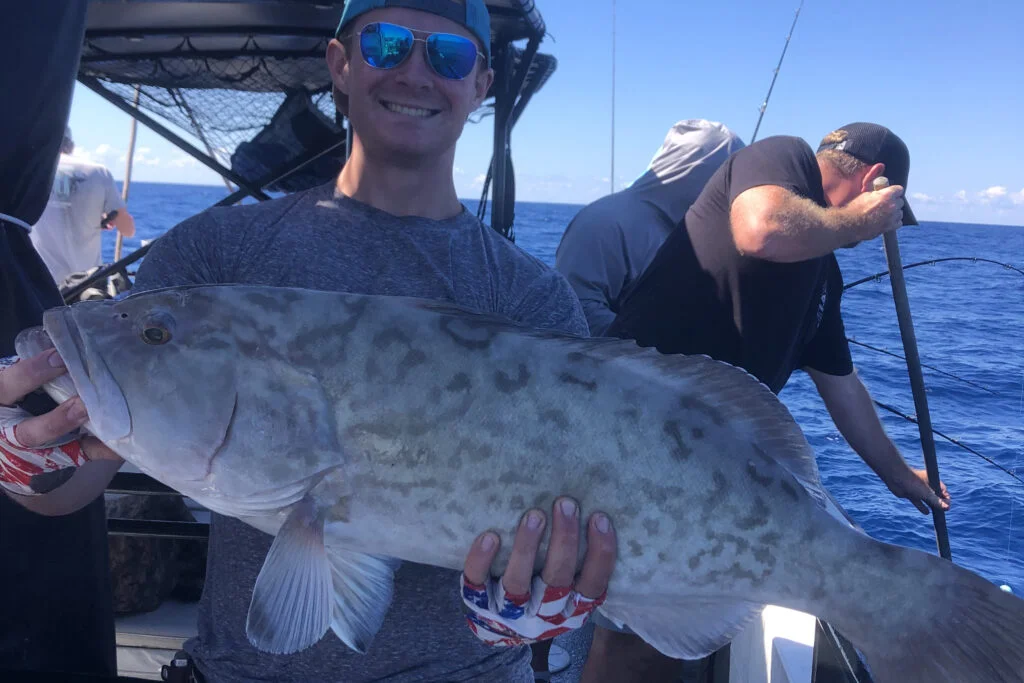
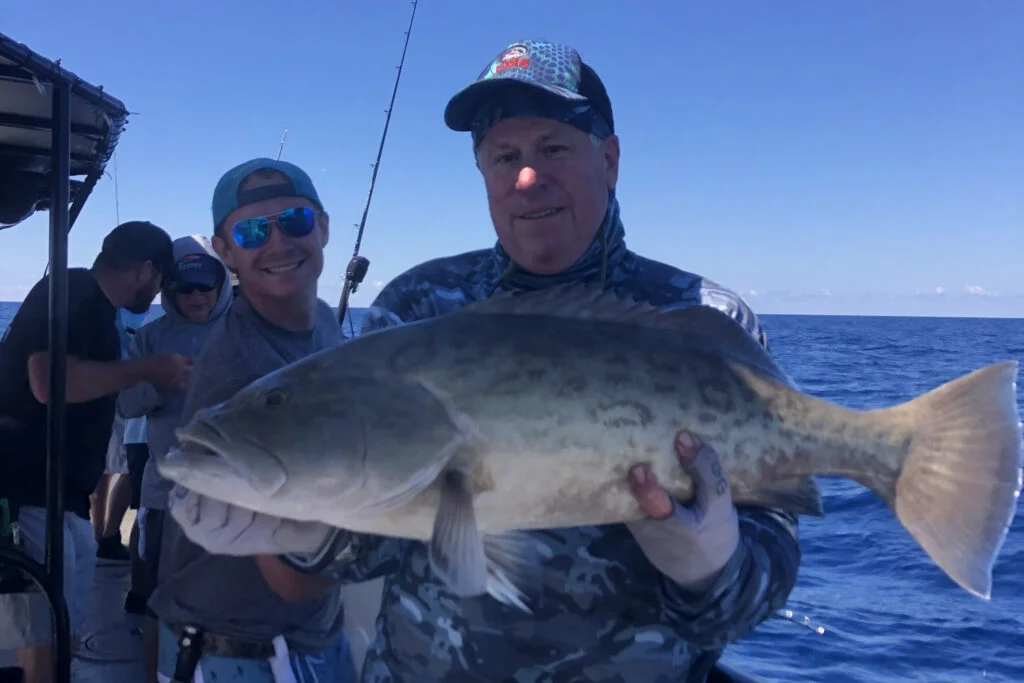
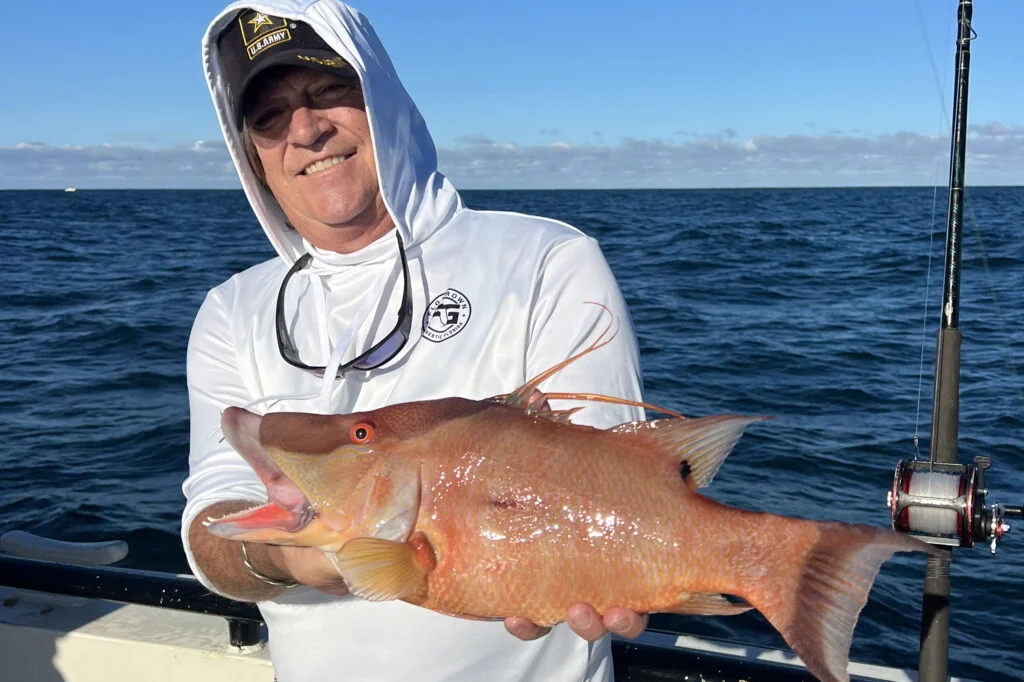
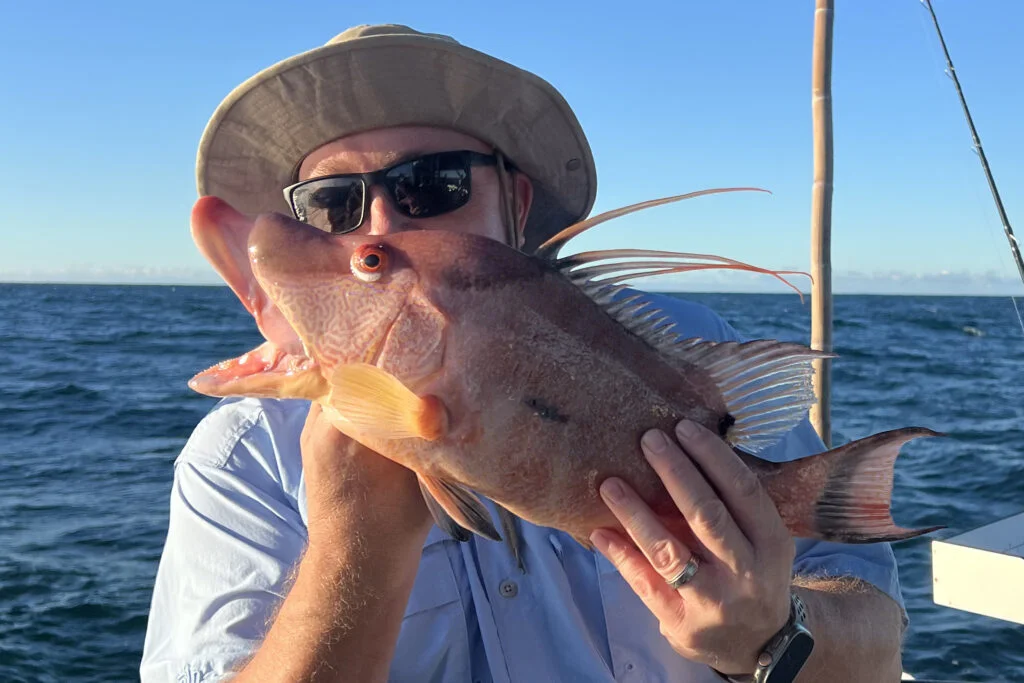
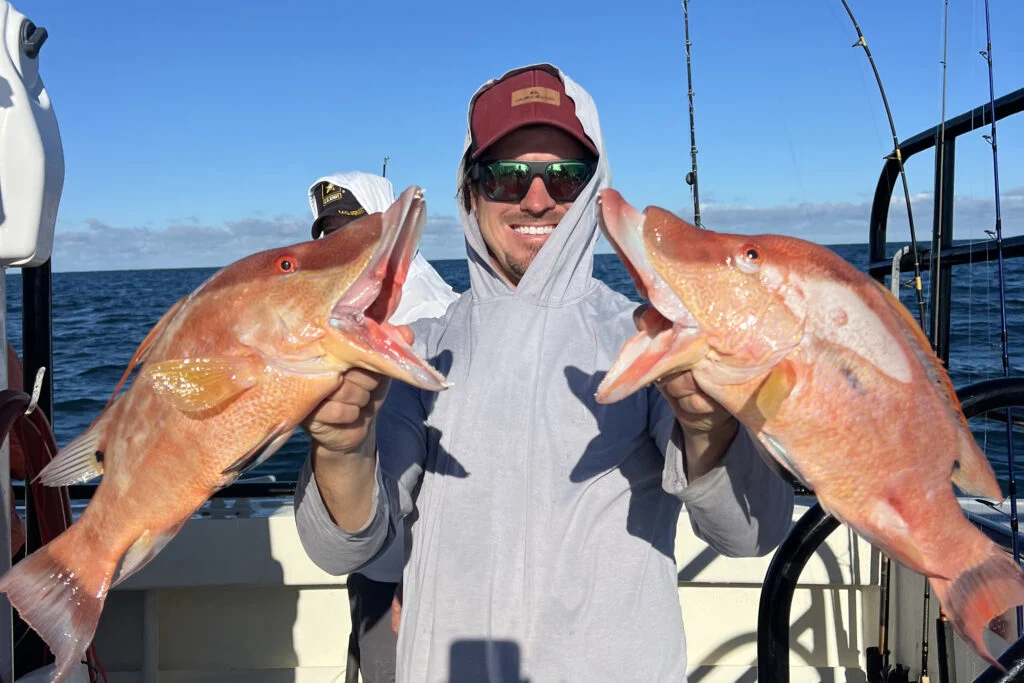
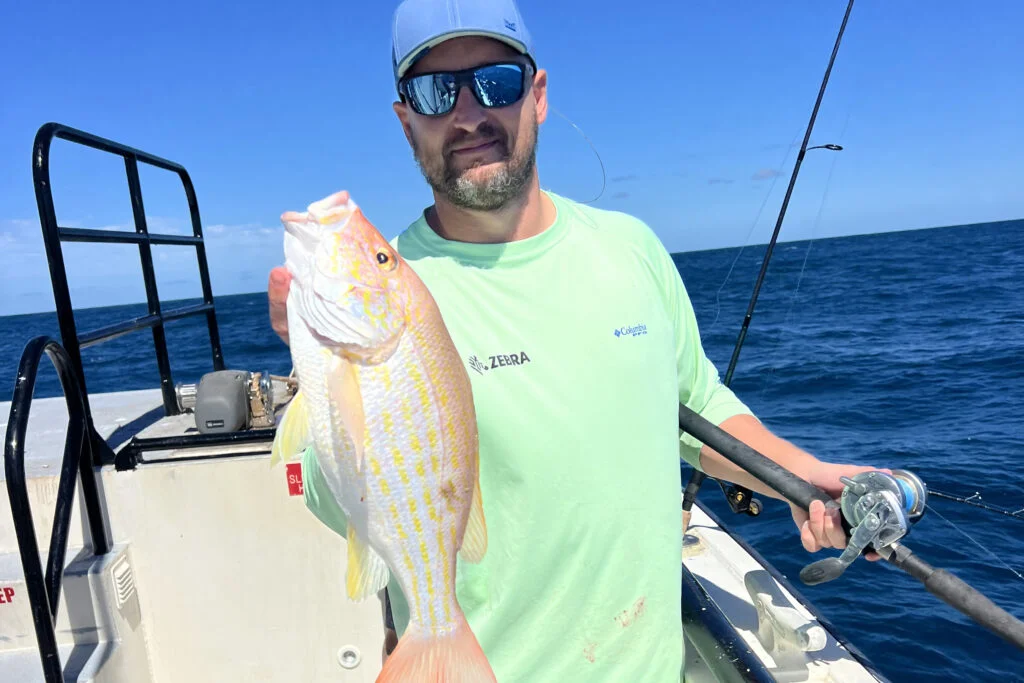
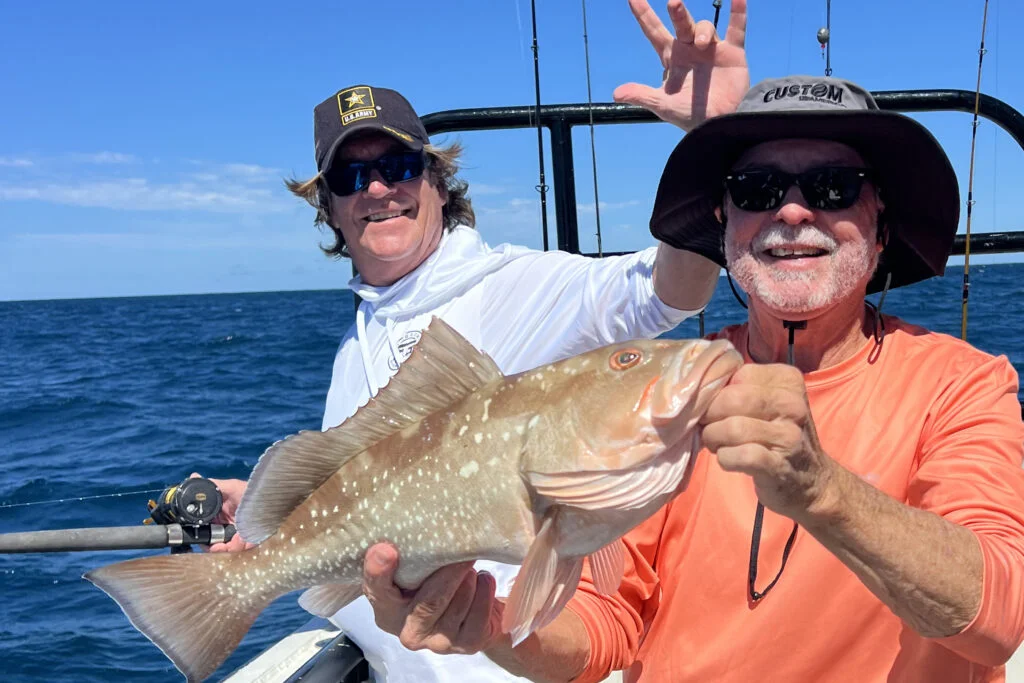
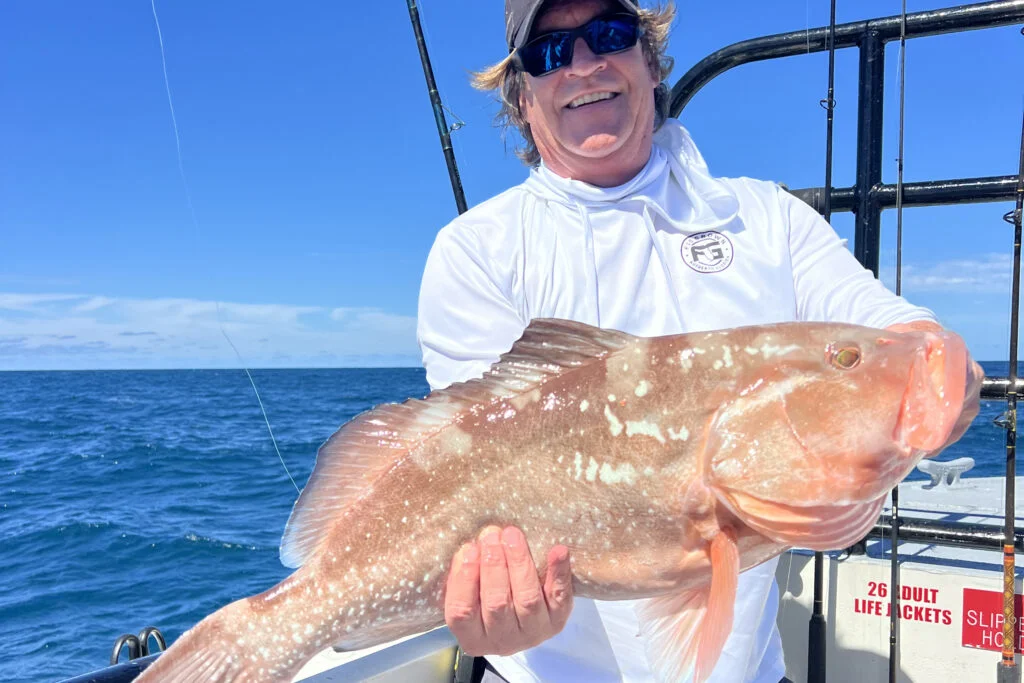
After a stretch of rough weather, the offshore forecast is finally lining up for a great window to get back out deep this week, and we’re fired up to make the most of it. Conditions are setting up nicely for an excellent bite, and with water temperatures starting to even out behind the recent fronts, the fish should be ready to chew.
Red grouper action has been solid lately, with anglers finding quality fish on the ledges, potholes, and hard-bottom areas in that 140–180ft range. Bigger dead baits like bonita strips, whole squid, and northern mackerel have been producing best, though some of the more aggressive fish have hit large live pinfish as well. Scamp grouper are also mixed in and biting well on those same deeper structures, especially when worked with a medium-sized pinfish or cut threadfin on a 6/0–7/0 hook and 50–60lb leader.
Triggerfish are steady, and we’re still seeing good numbers before the next seasonal closure arrives. Smaller strips of squid or cut fish have been working best to get them fired up. Mangrove snapper fishing continues to be productive, with some impressive sizes showing up on the 12-hour night trips and longer 39-hour excursions. Double-snell rigs with small chunks of threadfin or live shrimp are producing the most consistent action. Yellowtail snapper have also been biting well, especially around sundown and into the night—light tackle and small cut baits have been key to enticing those bigger, line-shy fish.
The pelagic action remains promising too, with a few blackfin tuna, kingfish, and the occasional wahoo still showing up offshore. With the moon phase and improving weather, there’s a good chance we’ll see the pelagics turn up the heat again this coming week.
All in all, the offshore scene is primed for a solid run of fishing. With the seas settling and the fish fired up, now’s the time to hop on a deep-sea adventure aboard one of our long-range trips and take advantage of everything the Gulf has to offer
Don’t forget, that we have some great videos on our fishing tips and tricks page here to show you how to target and rig for almost any species-> https://www.hubbardsmarina.com/fishing-tips/
Remember that when fishing in deeper nearshore and offshore federal waters, the Descend Act requires you to have a descending device or venting tool “rigged and ready.” If you know how to use a venting tool, keep it prepared. If not, here’s some helpful advice: https://bit.ly/3L5HTnv. Using a descending device is straightforward and doesn’t require as much precision or practice as venting. Return em’ Right has a training course only takes about 10-15 minutes, and you can learn valuable techniques to protect our offshore fishery. Spread the word by visiting: https://returnemright.org/.
TERMS OF REFERENCE-
Inshore: This covers the areas from the inner bays, through the bridges, and right up to the beaches.
Near Shore: This includes the coastal waters from the beaches up to twenty miles offshore, or up to a depth of 100 feet.
Offshore: This extends from twenty miles offshore or from a depth of 100 feet and beyond.
For more fishing reports, photos, videos, and other content, check out Hubbard’s Marina on Facebook, Instagram, YouTube, TikTok, Twitter, Pinterest, or Snapchat by searching for @HubbardsMarina. Remember our family motto: “If you’re too busy to go fishing, you’re just too busy!” Thank you for reading our report.
Capt. Dylan Hubbard, Hubbard’s Marina
Phone or text: (727) 393-1947
Website: Hubbard’s Marina
If you’re not seeing the latest article, try clearing your browser cache.
You can search “how to clear browser cache” on Google for quick steps.

